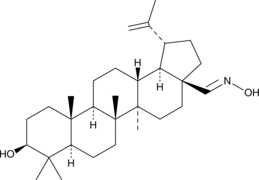Immunology/Inflammation
The immune and inflammation-related pathway including the Toll-like receptors pathway, the B cell receptor signaling pathway, the T cell receptor signaling pathway, etc.
Toll-like receptors (TLRs) play a central role in host cell recognition and responses to microbial pathogens. TLR4 initially recruits TIRAP and MyD88. MyD88 then recruits IRAKs, TRAF6, and the TAK1 complex, leading to early-stage activation of NF-κB and MAP kinases [1]. TLR4 is endocytosed and delivered to intracellular vesicles and forms a complex with TRAM and TRIF, which then recruits TRAF3 and the protein kinases TBK1 and IKKi. TBK1 and IKKi catalyze the phosphorylation of IRF3, leading to the expression of type I IFN [2].
BCR signaling is initiated through ligation of mIg under conditions that induce phosphorylation of the ITAMs in CD79, leading to the activation of Syk. Once Syk is activated, the BCR signal is transmitted via a series of proteins associated with the adaptor protein B-cell linker (Blnk, SLP-65). Blnk binds CD79a via non-ITAM tyrosines and is phosphorylated by Syk. Phospho-Blnk acts as a scaffold for the assembly of the other components, including Bruton’s tyrosine kinase (Btk), Vav 1, and phospholipase C-gamma 2 (PLCγ2) [3]. Following the assembly of the BCR-signalosome, GRB2 binds and activates the Ras-guanine exchange factor SOS, which in turn activates the small GTPase RAS. The original RAS signal is transmitted and amplified through the mitogen-activated protein kinase (MAPK) pathway, which including the serine/threonine-specific protein kinase RAF followed by MEK and extracellular signal related kinases ERK 1 and 2 [4]. After stimulation of BCR, CD19 is phosphorylated by Lyn. Phosphorylated CD19 activates PI3K by binding to the p85 subunit of PI3K and produce phosphatidylinositol-3,4,5-trisphosphate (PIP3) from PIP2, and PIP3 transmits signals downstream [5].
Central process of T cells responding to specific antigens is the binding of the T-cell receptor (TCR) to specific peptides bound to the major histocompatibility complex which expressed on antigen-presenting cells (APCs). Once TCR connected with its ligand, the ζ-chain–associated protein kinase 70 molecules (Zap-70) are recruited to the TCR-CD3 site and activated, resulting in an initiation of several signaling cascades. Once stimulation, Zap-70 forms complexes with several molecules including SLP-76; and a sequential protein kinase cascade is initiated, consisting of MAP kinase kinase kinase (MAP3K), MAP kinase kinase (MAPKK), and MAP kinase (MAPK) [6]. Two MAPK kinases, MKK4 and MKK7, have been reported to be the primary activators of JNK. MKK3, MKK4, and MKK6 are activators of P38 MAP kinase [7]. MAP kinase pathways are major pathways induced by TCR stimulation, and they play a key role in T-cell responses.
Phosphoinositide 3-kinase (PI3K) binds to the cytosolic domain of CD28, leading to conversion of PIP2 to PIP3, activation of PKB (Akt) and phosphoinositide-dependent kinase 1 (PDK1), and subsequent signaling transduction [8].
References
[1] Kawai T, Akira S. The role of pattern-recognition receptors in innate immunity: update on Toll-like receptors[J]. Nature immunology, 2010, 11(5): 373-384.
[2] Kawai T, Akira S. Toll-like receptors and their crosstalk with other innate receptors in infection and immunity[J]. Immunity, 2011, 34(5): 637-650.
[3] Packard T A, Cambier J C. B lymphocyte antigen receptor signaling: initiation, amplification, and regulation[J]. F1000Prime Rep, 2013, 5(40.10): 12703.
[4] Zhong Y, Byrd J C, Dubovsky J A. The B-cell receptor pathway: a critical component of healthy and malignant immune biology[C]//Seminars in hematology. WB Saunders, 2014, 51(3): 206-218.
[5] Baba Y, Matsumoto M, Kurosaki T. Calcium signaling in B cells: regulation of cytosolic Ca 2+ increase and its sensor molecules, STIM1 and STIM2[J]. Molecular immunology, 2014, 62(2): 339-343.
[6] Adachi K, Davis M M. T-cell receptor ligation induces distinct signaling pathways in naive vs. antigen-experienced T cells[J]. Proceedings of the National Academy of Sciences, 2011, 108(4): 1549-1554.
[7] Rincón M, Flavell R A, Davis R A. The Jnk and P38 MAP kinase signaling pathways in T cell–mediated immune responses[J]. Free Radical Biology and Medicine, 2000, 28(9): 1328-1337.
[8] Bashour K T, Gondarenko A, Chen H, et al. CD28 and CD3 have complementary roles in T-cell traction forces[J]. Proceedings of the National Academy of Sciences, 2014, 111(6): 2241-2246.
Ziele für Immunology/Inflammation
- Cyclic GMP-AMP Synthase(1)
- Apoptosis(137)
- 5-Lipoxygenase(18)
- TLR(106)
- Papain(2)
- PGDS(1)
- PGE synthase(26)
- SIKs(10)
- IκB/IKK(83)
- AP-1(2)
- KEAP1-Nrf2(47)
- NOD1(1)
- NF-κB(265)
- Interleukin Related(129)
- 15-lipoxygenase(2)
- Others(10)
- Aryl Hydrocarbon Receptor(35)
- CD73(16)
- Complement System(46)
- Galectin(30)
- IFNAR(19)
- NO Synthase(78)
- NOD-like Receptor (NLR)(37)
- STING(84)
- Reactive Oxygen Species(434)
- FKBP(14)
- eNOS(4)
- iNOS(24)
- nNOS(21)
- Glutathione(37)
- Adaptive Immunity(144)
- Allergy(129)
- Arthritis(25)
- Autoimmunity(134)
- Gastric Disease(64)
- Immunosuppressants(27)
- Immunotherapeutics(3)
- Innate Immunity(411)
- Pulmonary Diseases(76)
- Reactive Nitrogen Species(43)
- Specialized Pro-Resolving Mediators(42)
- Reactive Sulfur Species(24)
Produkte für Immunology/Inflammation
- Bestell-Nr. Artikelname Informationen
-
GC35412
Asperulosidic Acid
AsperulosidinsÄure (ASPA), ein bioaktives Iridoidglykosid, wird aus den KrÄutern von Hedyotis diffusa Willd extrahiert.
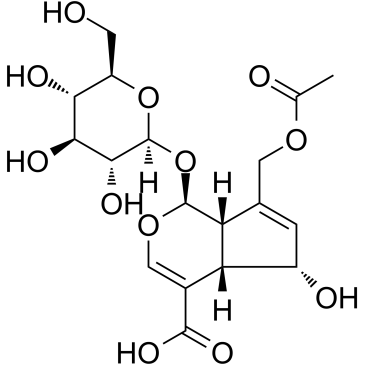
-
GC42860
Aspochalasin D
Aspochalasin D is a co-metabolite originally isolated from A.
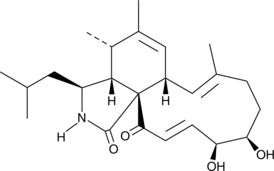
-
GC46886
Aspyrone
A fungal metabolite with diverse biological activities
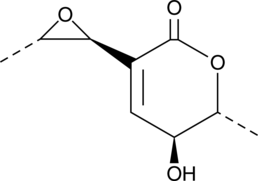
-
GC31350
Astaxanthin
Astaxanthin, das rote diÄtetische Carotinoid, ist ein oral wirksames und starkes Antioxidans.
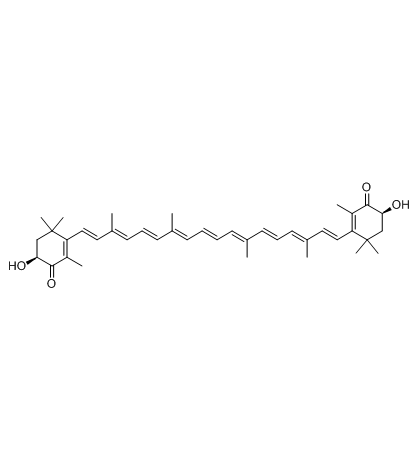
-
GC68702
Astegolimab
Astegolimab (MSTT 1041A; RG 6149) is a human IgG2 monoclonal antibody that blocks IL-33 signaling by targeting the IL-33 receptor ST2. Astegolimab has potential for use in chronic obstructive pulmonary disease (COPD) research.
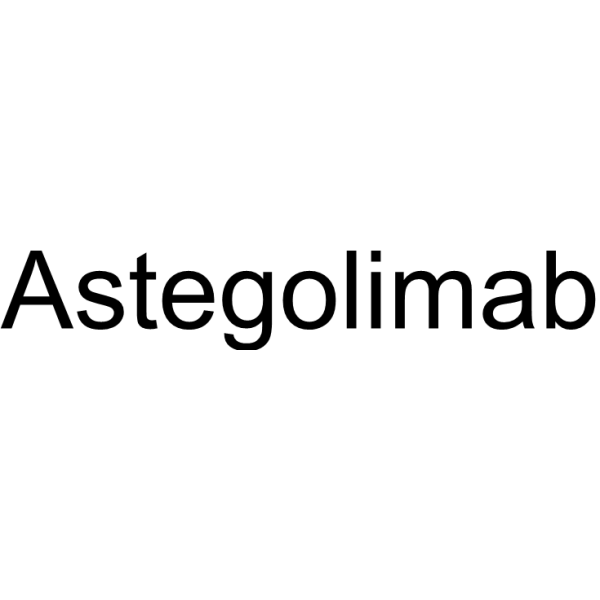
-
GC41640
Asterriquinol D dimethyl ether
Asterriquinol-D-Dimethylether ist ein Pilzmetabolit, der Maus-Myelom-NS-1-Zelllinien mit einer IC50 von 28 μg/ml hemmen kann.
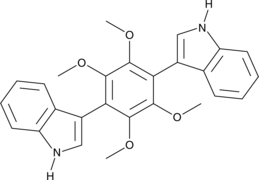
-
GN10415
Astilbin
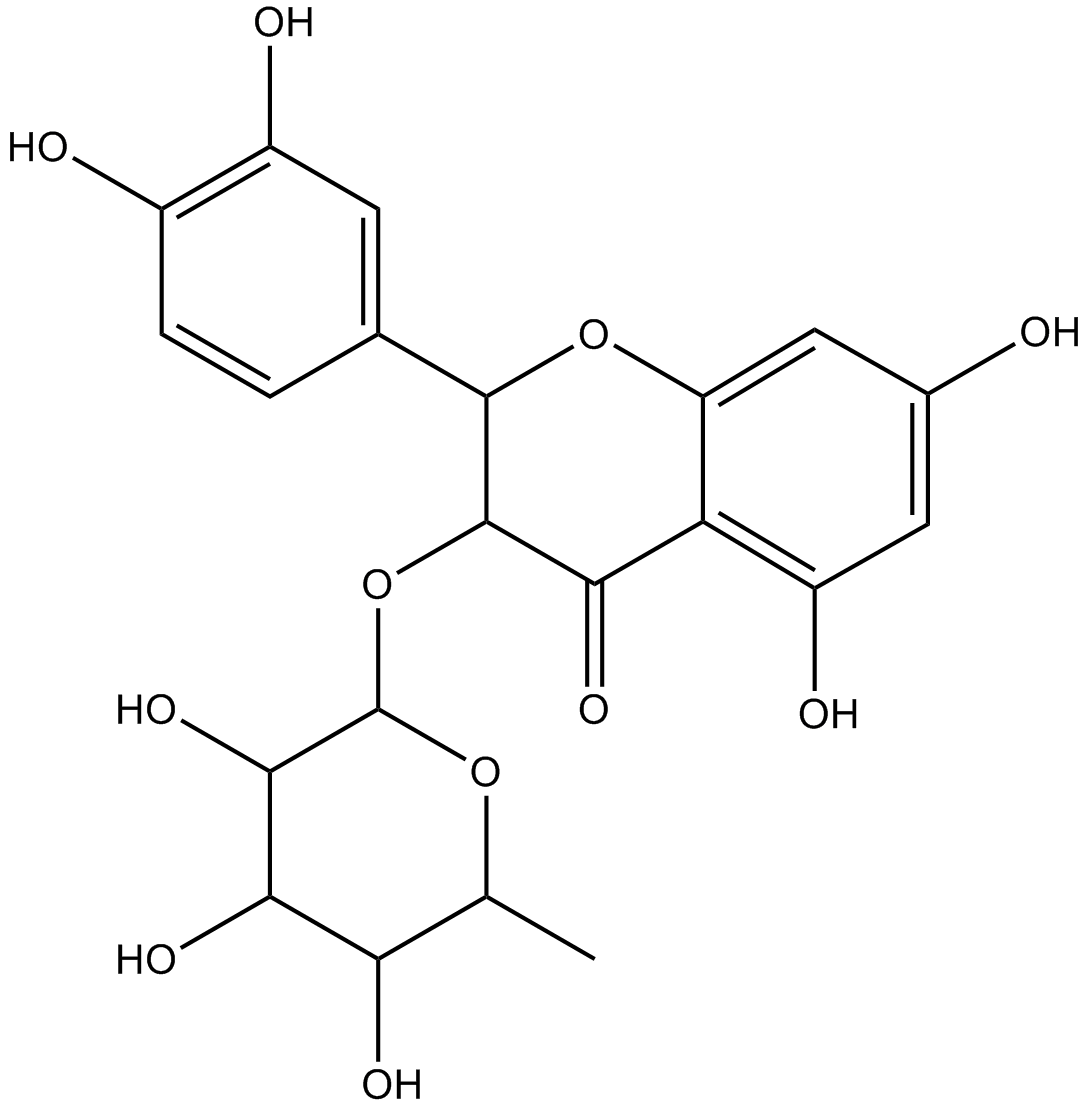
-
GC42863
Asukamycin
Asukamycin is polyketide isolated from the S.
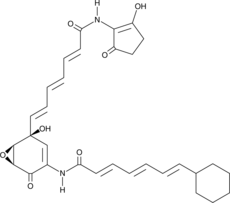
-
GC32457
Asymmetric dimethylarginine
Asymmetrisches Dimethylarginin ist ein endogener Inhibitor der Stickoxidsynthase (NOS) und fungiert als Marker fÜr eine endotheliale Dysfunktion bei einer Reihe von pathologischen ZustÄnden.
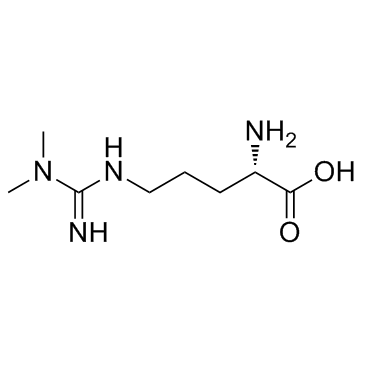
-
GC46091
Aszonapyrone A
Aszonapyron A ist ein Metabolit, der von Aspergillus zonatus produziert wird.
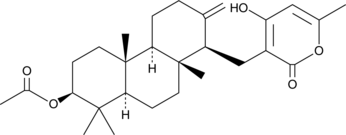
-
GC39554
AT2 receptor agonist C21
AT2-Rezeptoragonist C21 ist ein wirkstoffÄhnlicher selektiver Angiotensin-II-AT2-Rezeptoragonist mit Ki-Werten von 0,4 nM und >10 μM fÜr den AT2-Rezeptor bzw. AT1-Rezeptor.
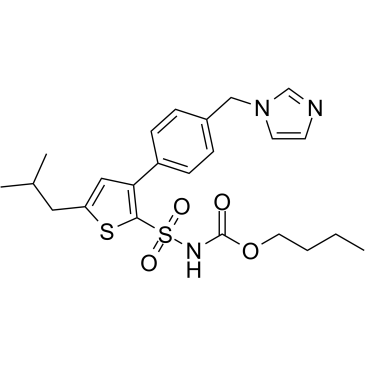
-
GC62334
AT791
AT791 ist ein potenter und oral bioverfÜgbarer TLR7- und TLR9-Inhibitor.
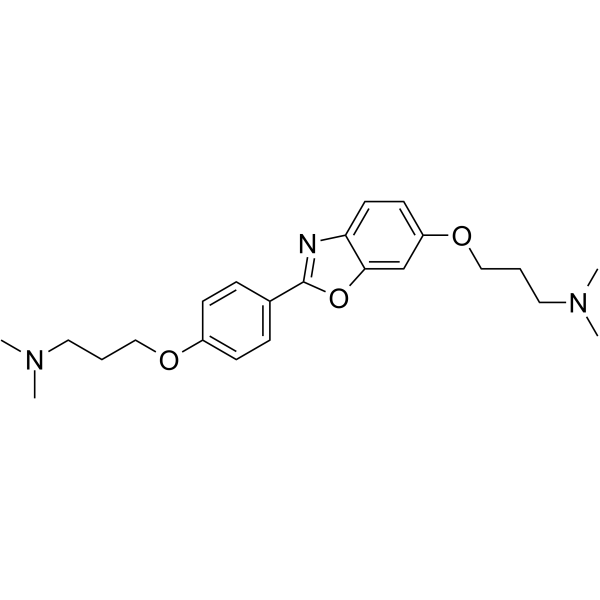
-
GC46887
Atazanavir-d6
An internal standard for the quantification of atazanavir
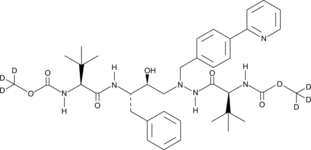
-
GC12537
ATB-337
ATB-337 ist ein HybridmolekÜl aus einem H2S-Donor und dem NSAID Diclofenac.
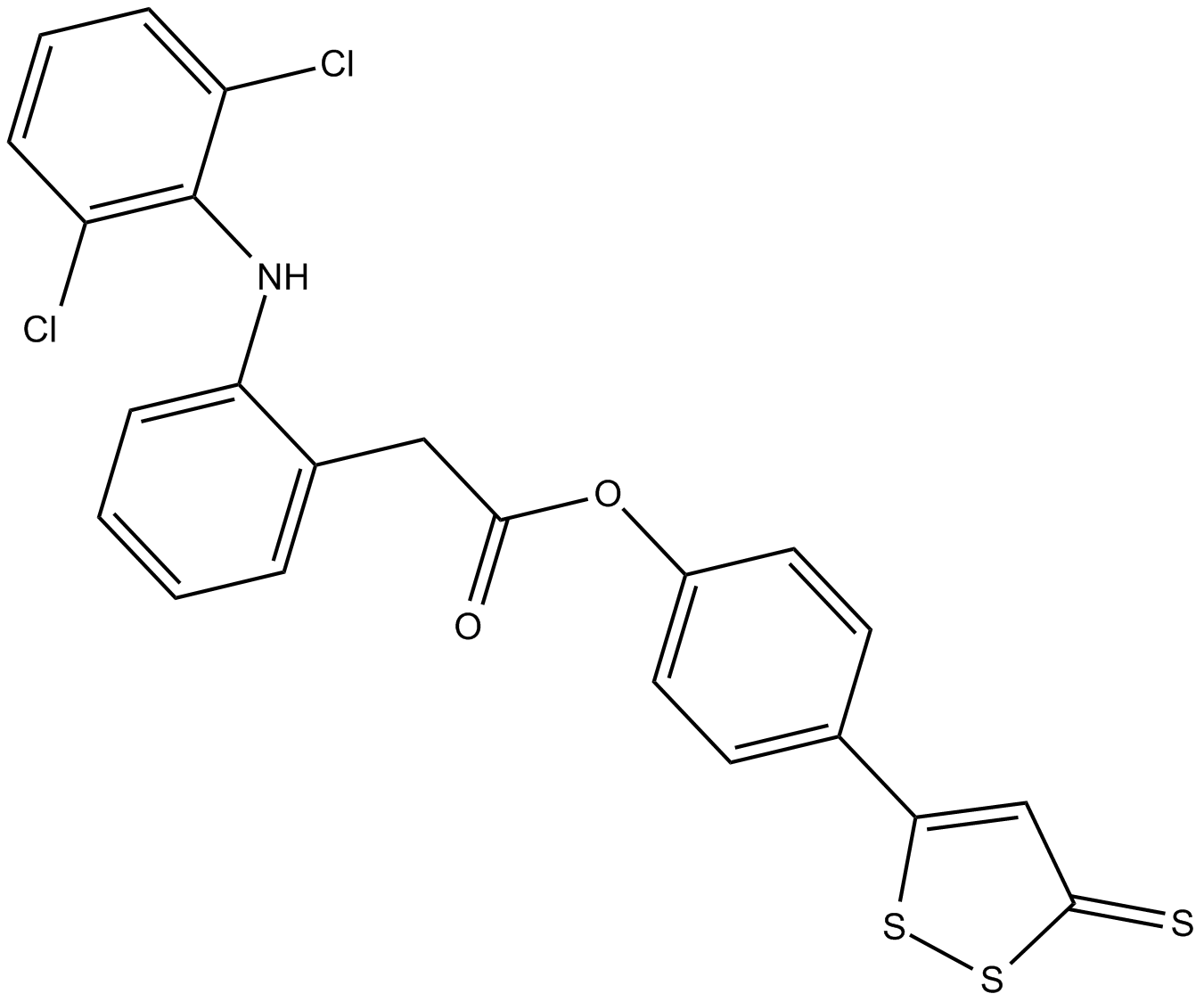
-
GC16245
ATB-343
hybrid molecule of an H2S donor and the NSAID indomethacin
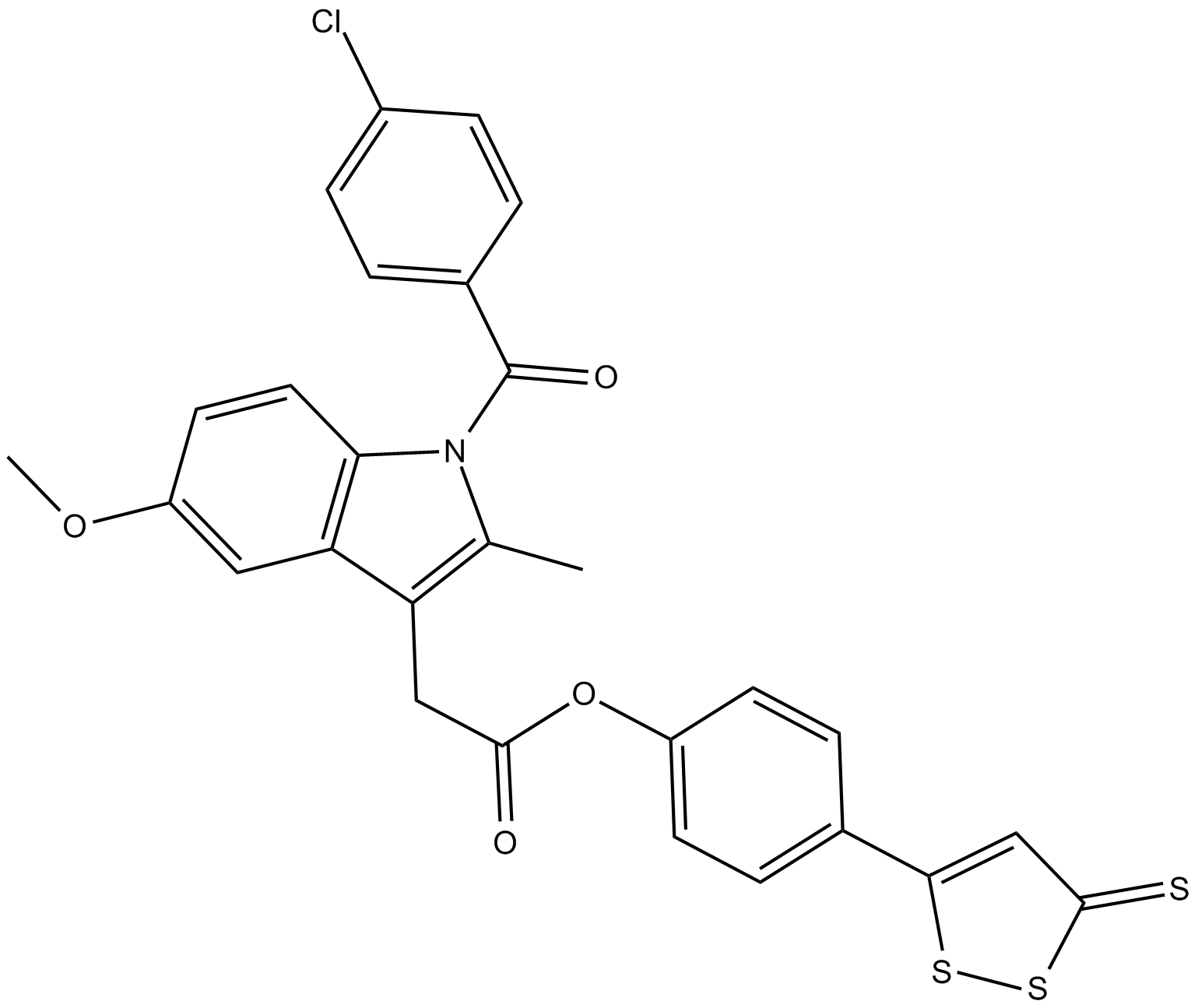
-
GC46892
ATRA-BA Hybrid
A prodrug form of all-trans retinoic acid and butyric acid

-
GN10627
Atractylenolide I
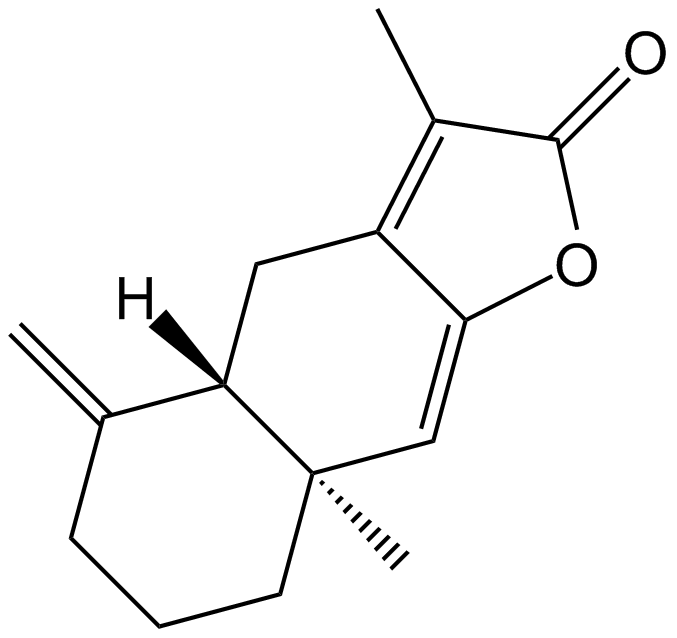
-
GC48925
Aureonitol
A fungal metabolite
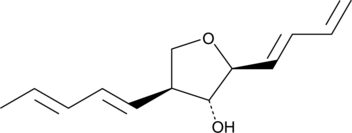
-
GC41490
Aureusimine B
Aureusimine B, also known as phevalin, is a natural pyrazinone produced by certain fungi and by Staphylococcus spp., including S.
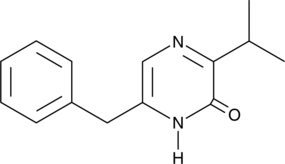
-
GC46895
Aurintricarboxylic Acid (ammonium salt)
A protein synthesis inhibitor with diverse biological activities
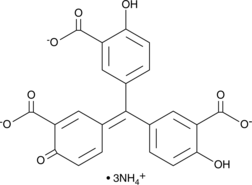
-
GC40005
Aurodox
Aurodox is a polyketide antibiotic originally isolated from S.

-
GC49646
Aurothioglucose (hydrate)
A TrxR inhibitor
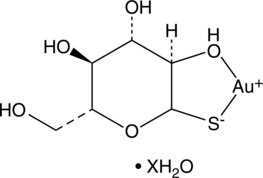
-
GC42877
AUY954
AUY954 is an orally bioavailable and selective agonist of the sphingosine-1-phosphate receptor 1 (S1P1; EC50 = 1.2 nM for stimulating GTPγS binding to S1P1 in CHO cells).

-
GC32486
AVE-3085
AVE-3085 ist ein potenter endothelialer Stickoxid-Synthase-Verstärker, der zur Behandlung von Herz-Kreislauf-Erkrankungen eingesetzt wird.
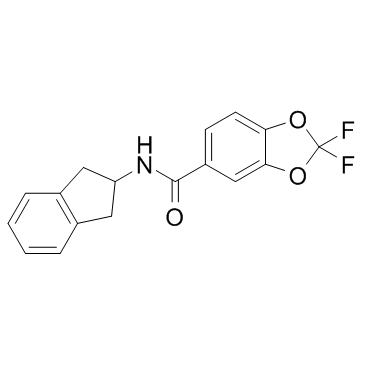
-
GC42880
Avenanthramide-C methyl ester
Avenanthramide-C methyl ester is an inhibitor of NF-κB activation that acts by blocking the phosphorylation of IKK and IκB (IC50 ~ 40 μM).
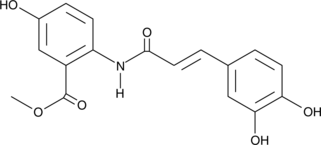
-
GC45388
Averantin
Averantin ist der Nebenmetabolit des Pilzes Cercospora arachidicola.

-
GC42881
Avermectin B1a aglycone
Avermectin B1a aglycone is an aglycone form of the anthelmintic and insecticide avermectin B1a.
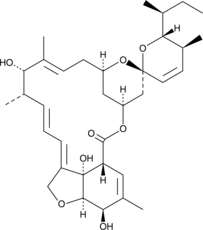
-
GC42882
Avermectin B1a monosaccharide
Avermectin B1a monosaccharide is a macrolide anthelmintic and monosaccharide form of avermectin B1a.
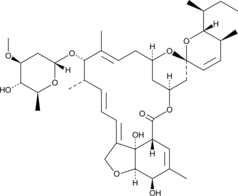
-
GC45984
Avilamycin A
An antibiotic

-
GC48511
Avrainvillamide
Avrainvillamid ((+)-Avrainvillamid) ist ein natÜrlich vorkommendes Alkaloid mit antiproliferativen Wirkungen, das an das nukleÄre Chaperon Nucleophosmin bindet, ein vorgeschlagenes onkogenes Protein, das in vielen verschiedenen menschlichen Tumoren Überexprimiert wird.
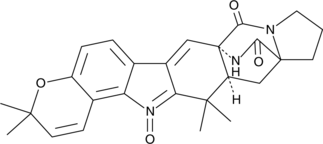
-
GC42885
AX 048
The group IVA phospholipase A2 (PLA2), known as calcium-dependent cytosolic PLA2 (cPLA2), selectively releases arachidonic acid from membrane phospholipids, playing a central role in initiating the synthesis of prostaglandins and leukotrienes.

-
GC35440
AX-024
AX-024 ist ein oral verfÜgbarer First-in-Class-Inhibitor der TCR-Nck-Interaktion, der selektiv die TCR-getriggerte T-Zell-Aktivierung mit einem IC50 von ~1 nM hemmt.
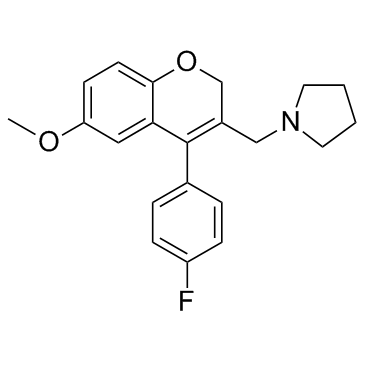
-
GC19046
AX-024 hydrochloride
AX-024-Hydrochlorid ist ein oral verfÜgbarer, erstklassiger Inhibitor der TCR-Nck-Interaktion, der selektiv die TCR-getriggerte T-Zell-Aktivierung mit einem IC50 von ~1 nM hemmt.
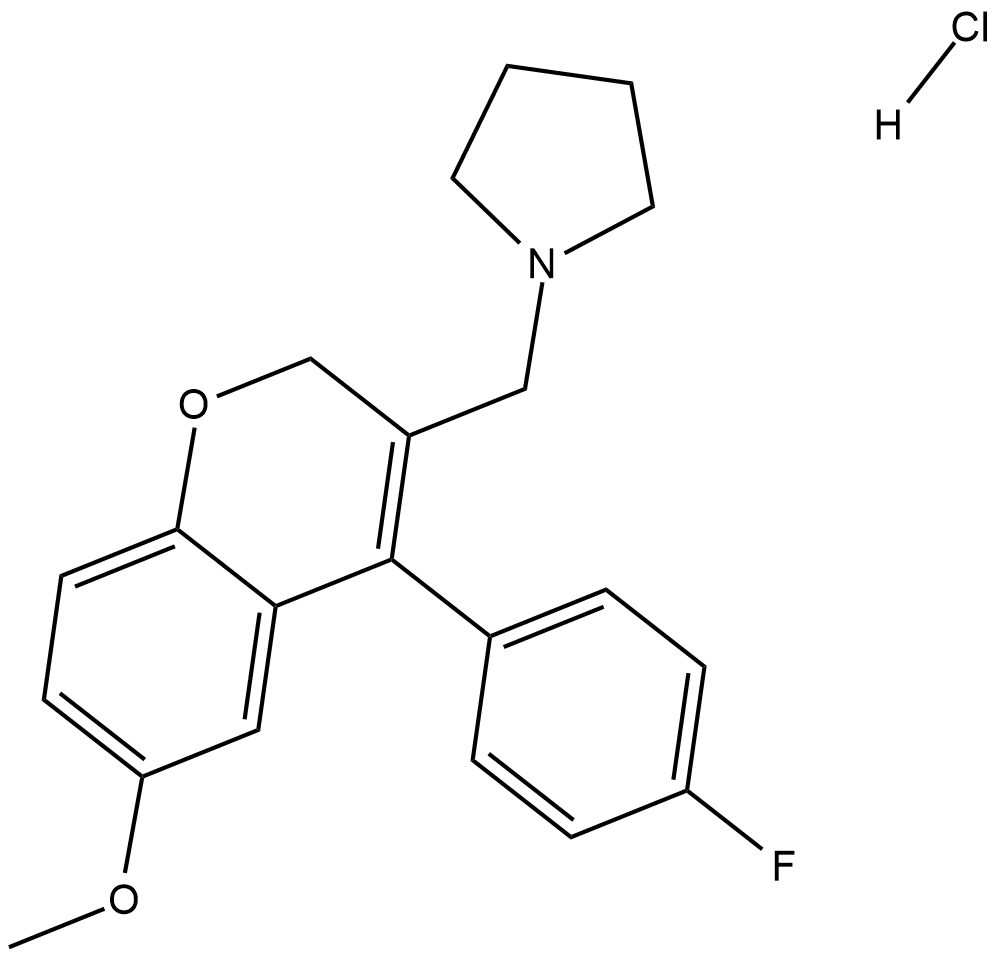
-
GC65283
AXC-715 trihydrochloride
AXC-715 (T785) Trihydrochlorid ist ein dualer TLR7/TLR8-Agonist, extrahiert aus dem Patent WO2020168017 A1.
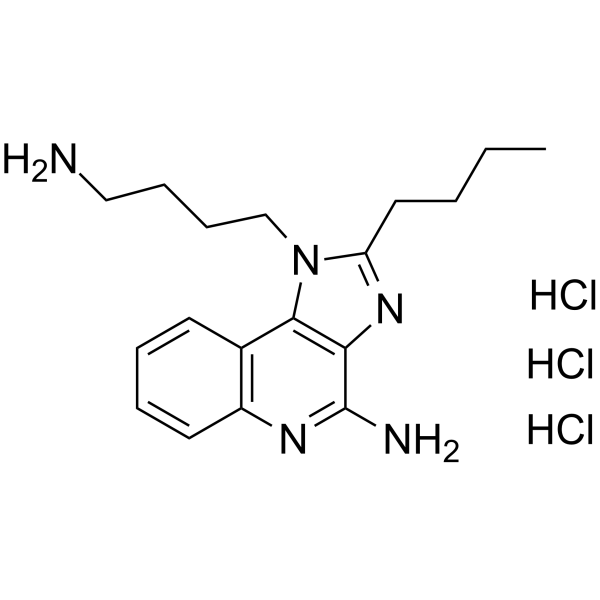
-
GC64938
AZD-7648
AZD-7648 ist ein potenter, oral aktiver, selektiver DNA-PK-Inhibitor mit einem IC50 von 0,6 nM. AZD-7648 induziert Apoptose und zeigt AntitumoraktivitÄt.
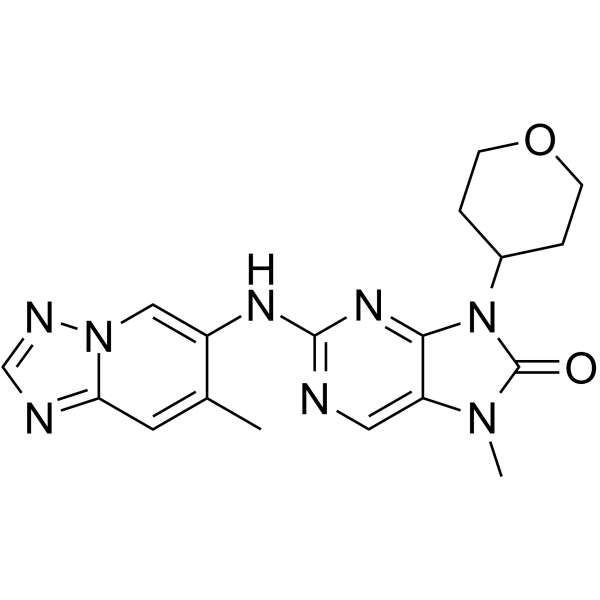
-
GC10135
AZD3264
AZD3264 ist ein selektiver IKB-Kinase-IKK2-Inhibitor.
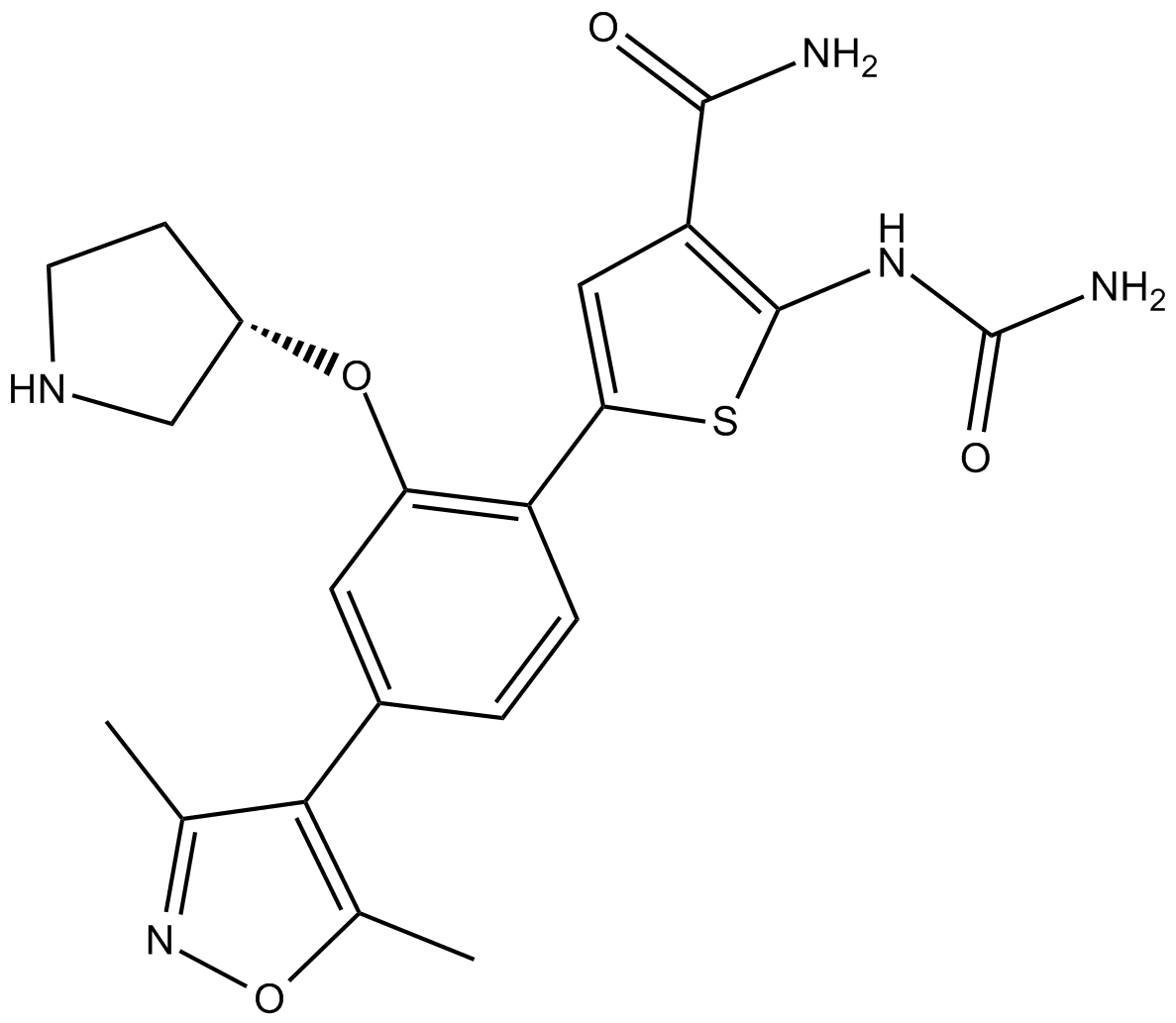
-
GC62488
AZD8848
AZD8848 ist ein selektiver Toll-like-Rezeptor 7 (TLR7)-Antidrug-Agonist, der fÜr die Erforschung von Asthma und allergischer Rhinitis entwickelt wurde.
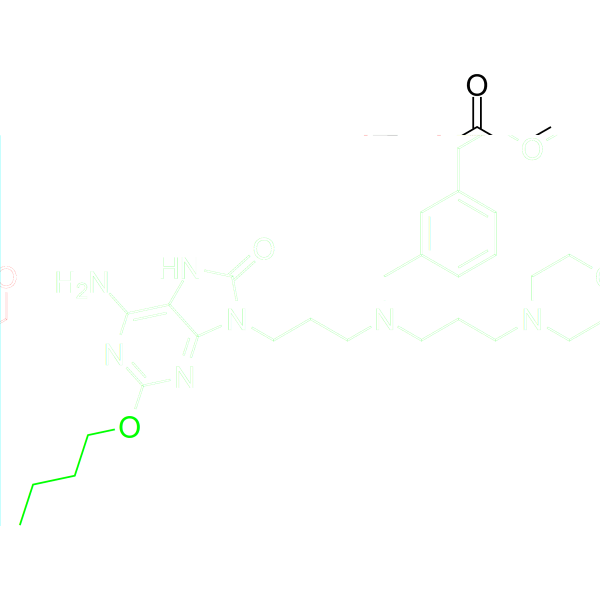
-
GC49057
Azelastine-13C-d3 (hydrochloride)
An internal standard for the quantification of azelastine
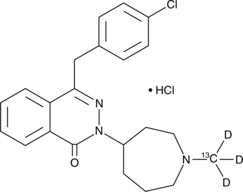
-
GC42891
azido-FTY720
Azido-FTY720 ist ein photoaktivierbares Analogon von FTY720.

-
GC46903
Azithromycin-d3
Azithromycin-d3 (CP 62993-d3) ist das mit Deuterium markierte Azithromycin.
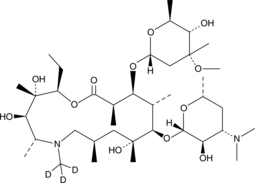
-
GC46904
Azoxystrobin
Azoxystrobin ist ein Breitspektrum-β-Methoxyacrylat-Fungizid.
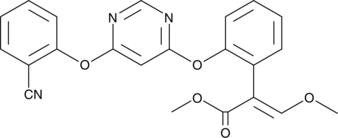
-
GC60616
AZT triphosphate
AZT-Triphosphat (3'-Azido-3'-desoxythymidin-5'-triphosphat) ist ein aktiver Triphosphat-Metabolit von Zidovudin (AZT).
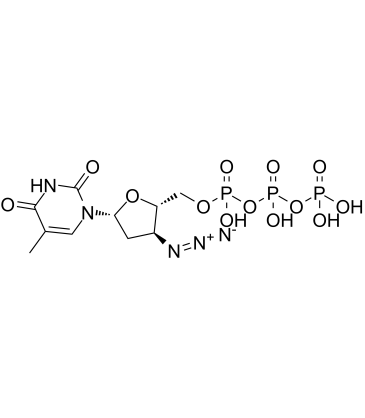
-
GC60617
AZT triphosphate TEA
AZT-Triphosphat TEA (3'-Azido-3'-desoxythymidin-5'-triphosphat TEA) ist ein aktiver Triphosphat-Metabolit von Zidovudin (AZT).
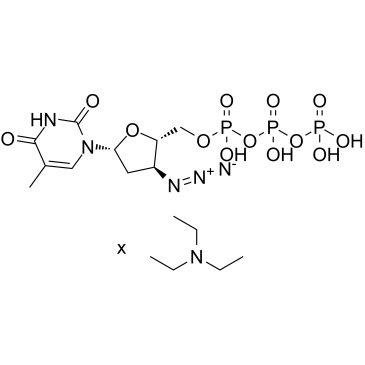
-
GC45795
Aztreonam-d6
An internal standard for the quantification of aztreonam
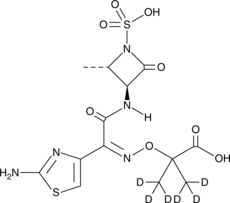
-
GC39280
B022
B022 ist ein potenter und selektiver Inhibitor der NF-κB-induzierenden Kinase (NIK) (Ki von 4,2 nM; IC50=15,1 nM).
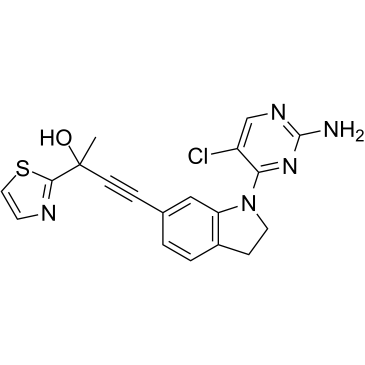
-
GC18580
B355252
B355252, ein niedermolekulares Phenoxythiophensulfonamid, ist ein potenter NGF-Rezeptoragonist.
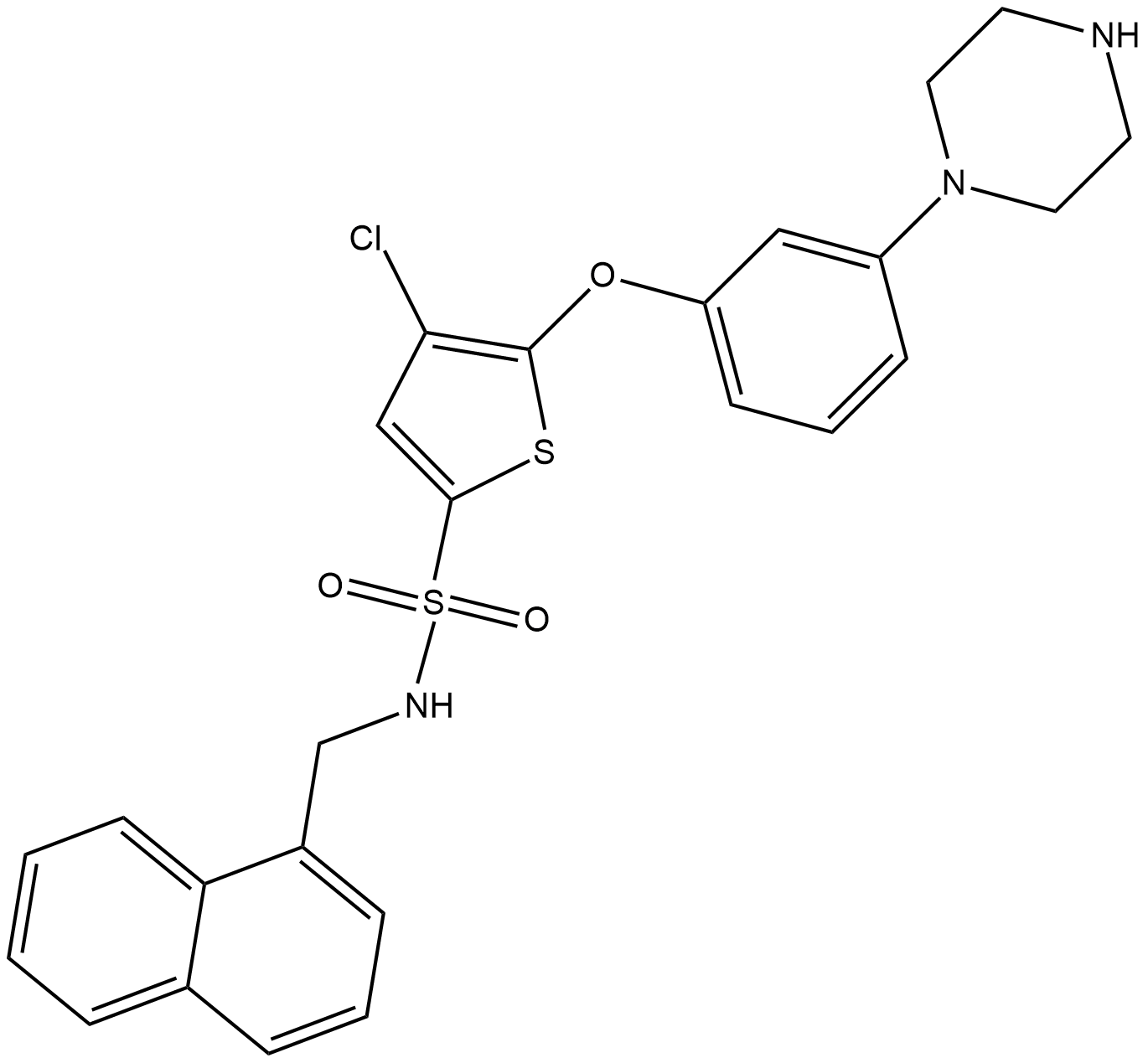
-
GC42895
Bacillosporin C
Bacillosporin C is an oxaphenalenone dimer originally isolated from T.
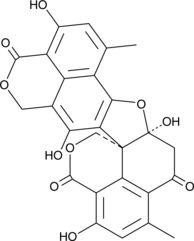
-
GC49793
Bacitracin A (technical grade)
A polypeptide antibiotic
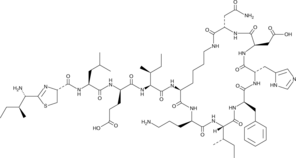
-
GC46905
Bacitracin Complex
A mixture of bacitracin polypeptides in complex with copper
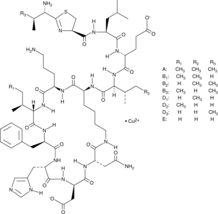
-
GC45938
Bacopaside X
Bacopasid X kommt in Bacopa monnieri vor und zeigt eine BindungsaffinitÄt zum D1-Rezeptor.
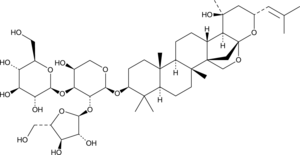
-
GC49302
Bactenecin (bovine) (trifluoroacetate salt)
A cationic peptide
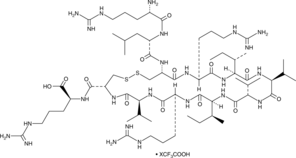
-
GN10018
Baicalin
Ein Flavonoid mit vielfältigen biologischen Aktivitäten.
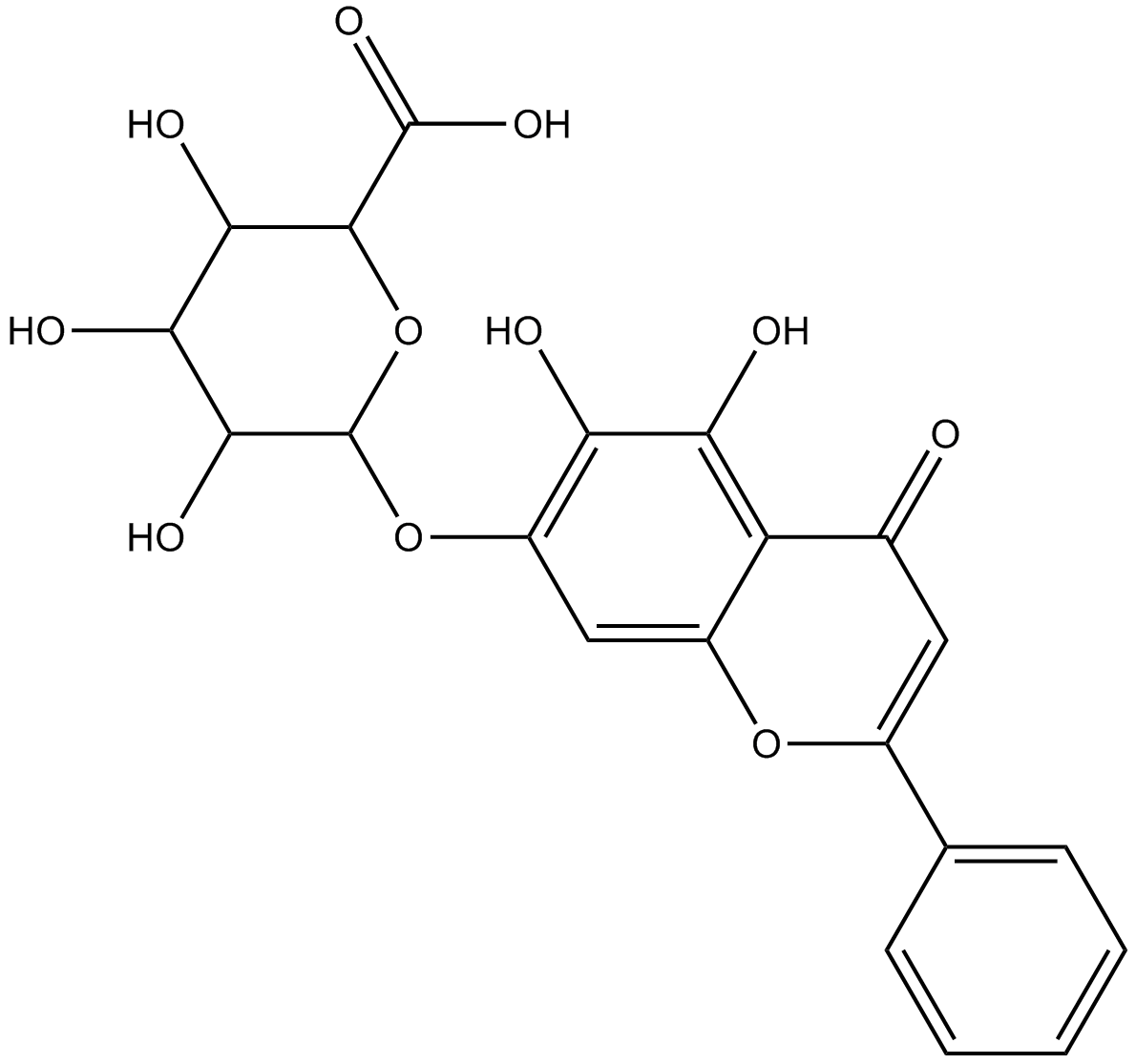
-
GC52344
Bak BH3 (72-87) (human) (trifluoroacetate salt)
A Bak-derived peptide

-
GC18126
Balsalazide
Balsalazid kÖnnte die Colitis-assoziierte Karzinogenese durch Modulation des IL-6/STAT3-Signalwegs unterdrÜcken.
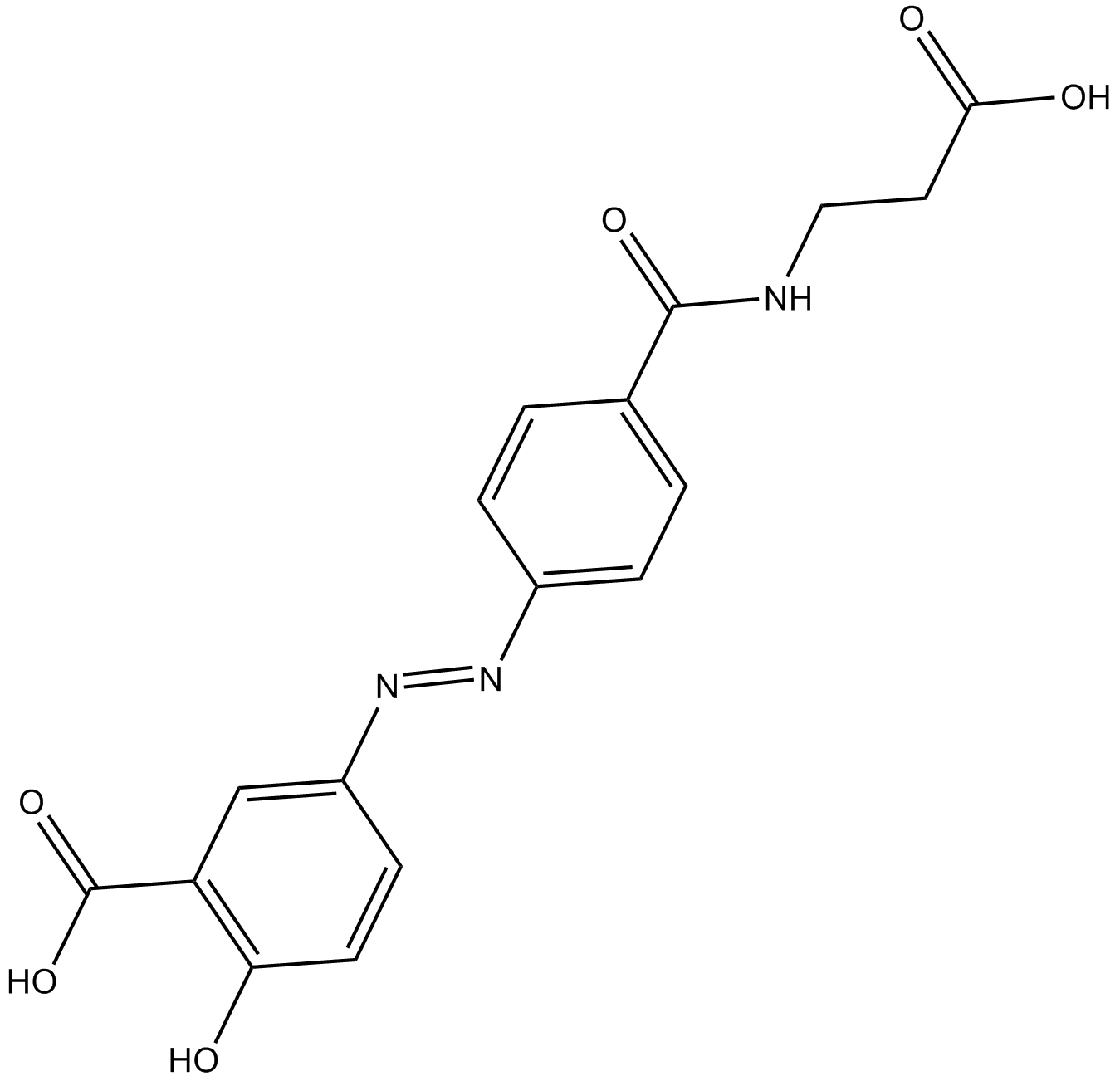
-
GC35466
Balsalazide sodium hydrate
Balsalazid-Natriumhydrat kÖnnte die Colitis-assoziierte Karzinogenese durch Modulation des IL-6/STAT3-Signalwegs unterdrÜcken.
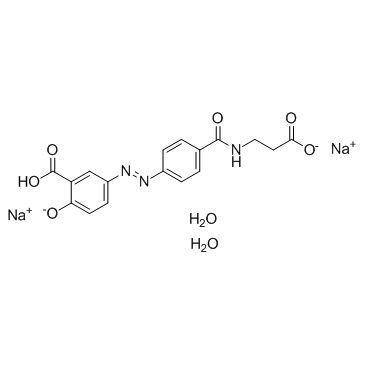
-
GC17574
BAPTA
BAPTA ist ein selektiver Chelatbildner fÜr Calcium.
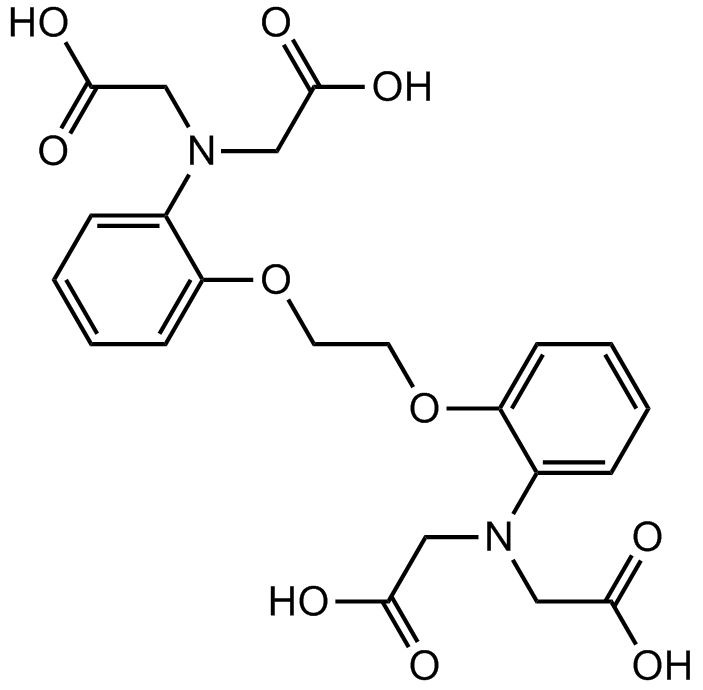
-
GC18313
BAR501 Impurity
BAR501 impurity is an impurity found in the preparation of BAR501 that acts as an agonist of the G protein-coupled bile acid-activated receptor (GP-BAR1).
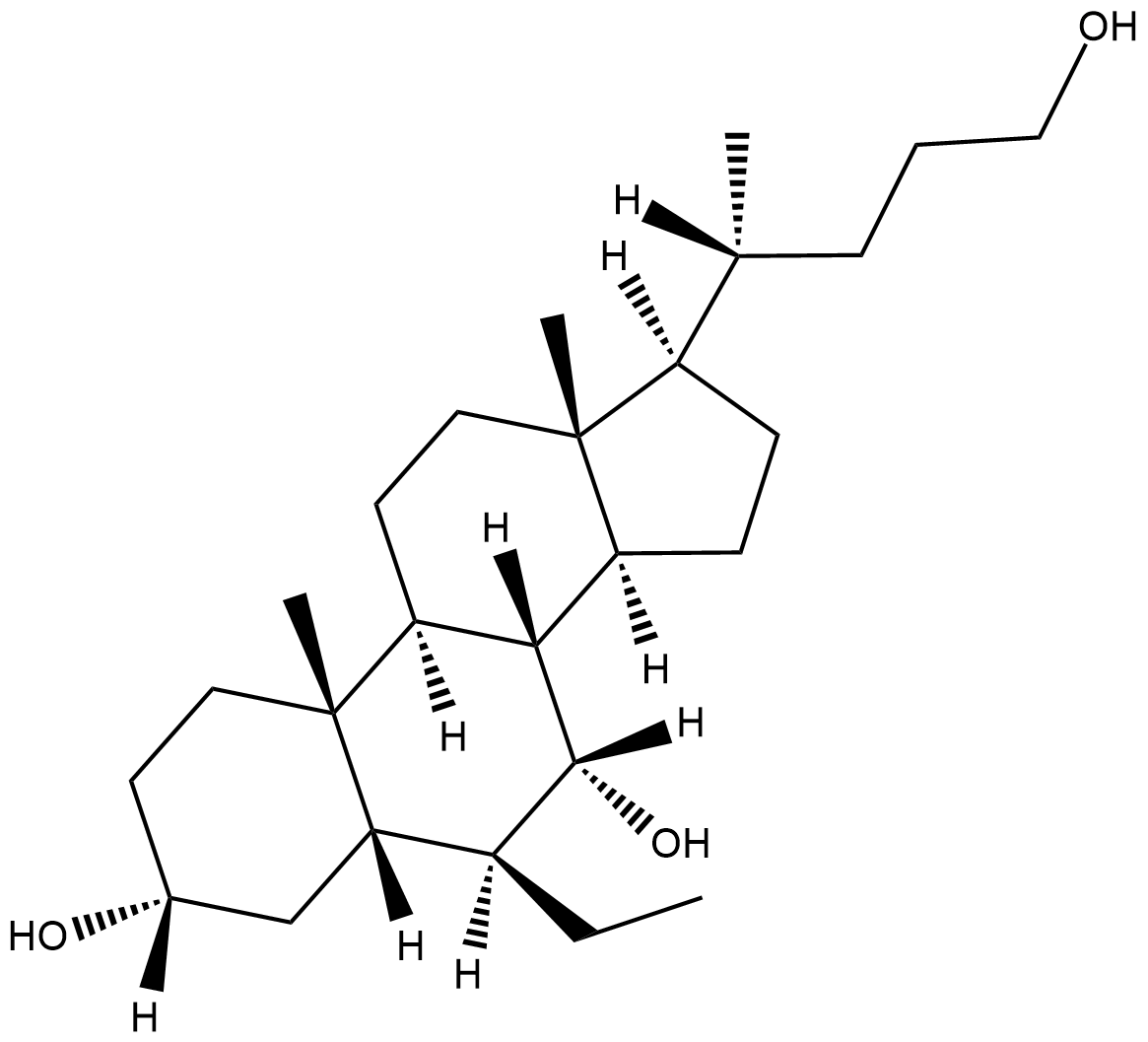
-
GC66331
Basiliximab
Basiliximab (CHI 621) ist ein rekombinanter chimÄrer muriner/humaner monoklonaler IgG1-Anti-Interleukin-2-Rezeptor-AntikÖrper. Basiliximab kann fÜr die Erforschung der Nierentransplantation verwendet werden.

-
GC52476
Bax Inhibitor Peptide V5 (trifluoroacetate salt)
A Bax inhibitor
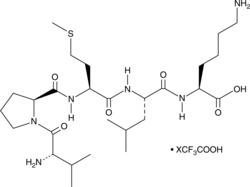
-
GC10345
Bay 11-7085
BAY 11-7085 (BAY 11-7083) ist ein Inhibitor der NF-κB-Aktivierung und Phosphorylierung von IκBα; es stabilisiert IκBα mit einem IC50 von 10 μM.
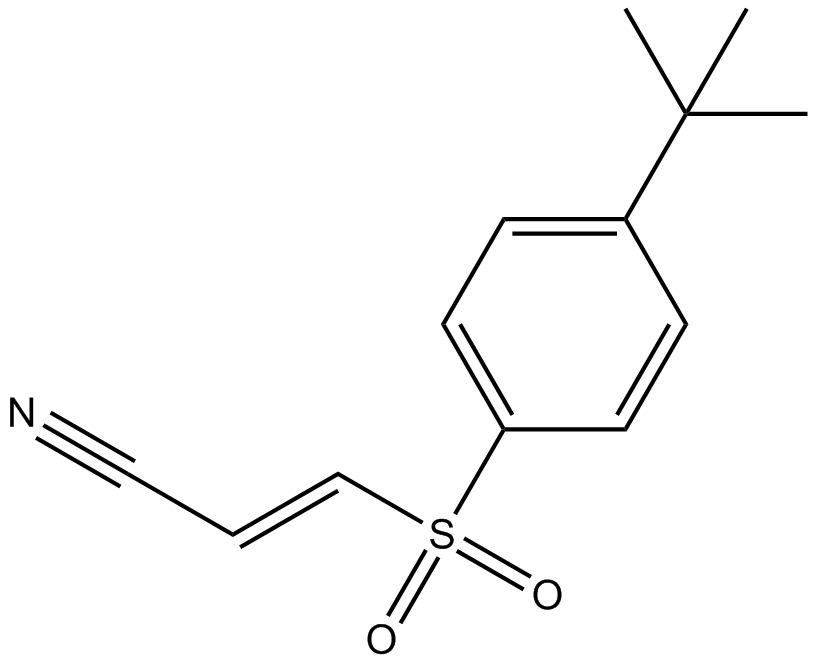
-
GC13035
Bay 11-7821
Ein selektiver und irreversibler NF-κB-Inhibitor
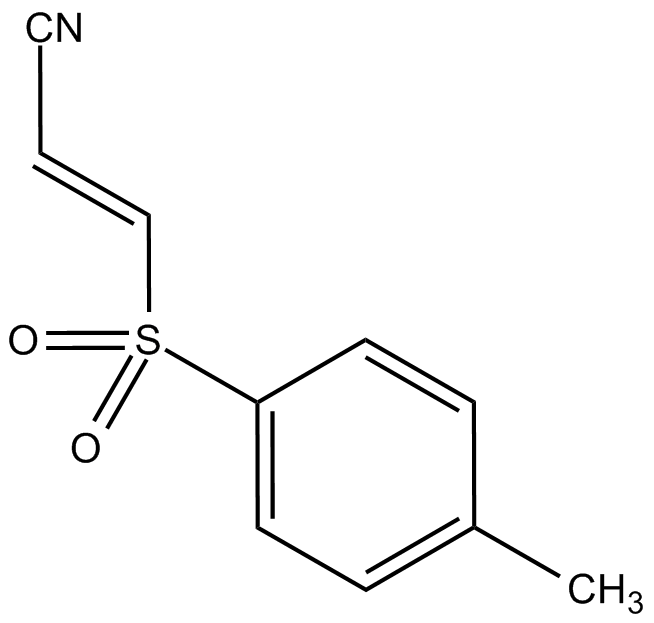
-
GC42897
BAY 61-3606 (hydrochloride)
BAY 61-3606 is a cell-permeable, reversible inhibitor of spleen tyrosine kinase (Syk; Ki = 7.5 nM; IC50 = 10 nM).
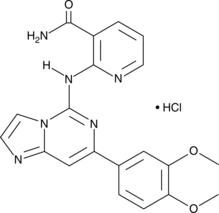
-
GC35474
Bay 65-1942 free base
Die freie Base von Bay 65-1942 ist ein ATP-kompetitiver und selektiver IKKβ-Inhibitor.
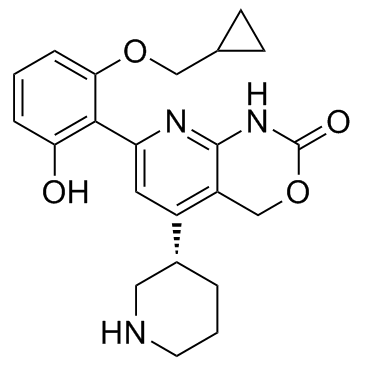
-
GC16303
Bay 65-1942 HCl salt
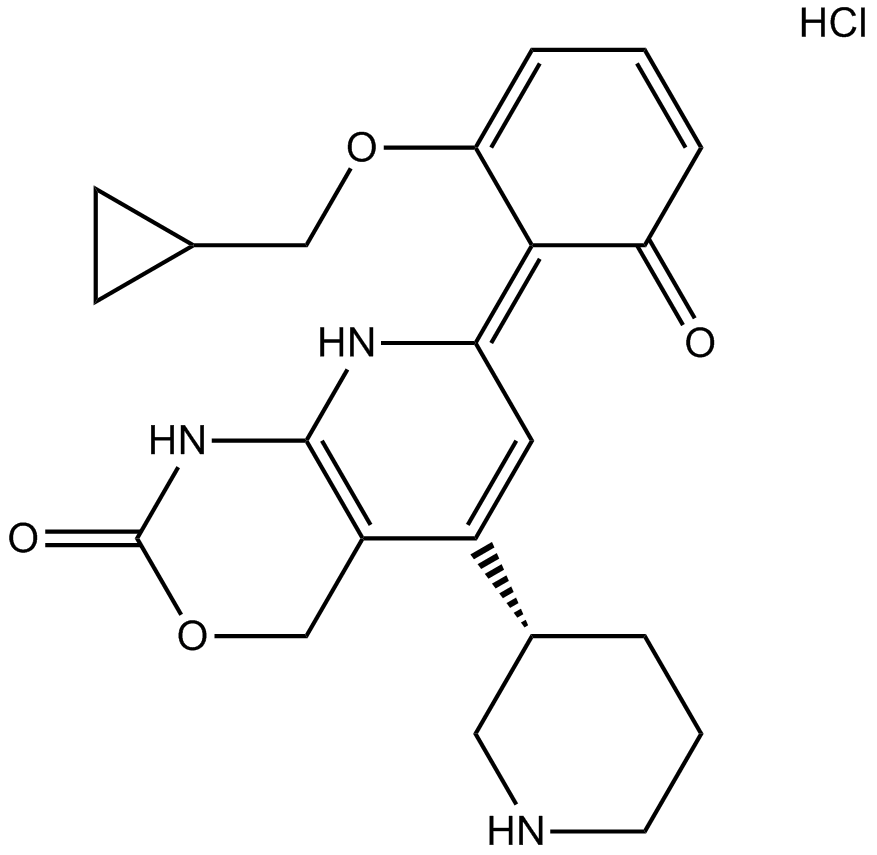
-
GC35475
Bay 65-1942 R form
Bay 65-1942 R-Form ist die weniger aktive R-Form von Bay 65-1942.
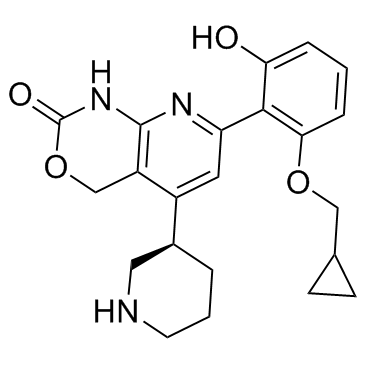
-
GC60624
BAY-985
BAY-985 ist ein hochpotenter, oral aktiver und selektiver ATP-kompetitiver dualer Inhibitor von TBK1 und IKKε mit IC50-Werten von 2/30 und 2 nM fÜr TBK1 (niedriges/hohes ATP) bzw. IKKε. Antitumorwirksamkeit.
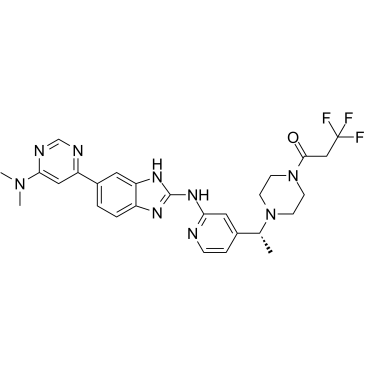
-
GC12232
BAY-X 1005
BAY-X 1005 (BAY X 1005; DG-031) ist ein oral aktiver und selektiver Hemmer des 5-Lipoxygenase-aktivierenden Proteins (FLAP).
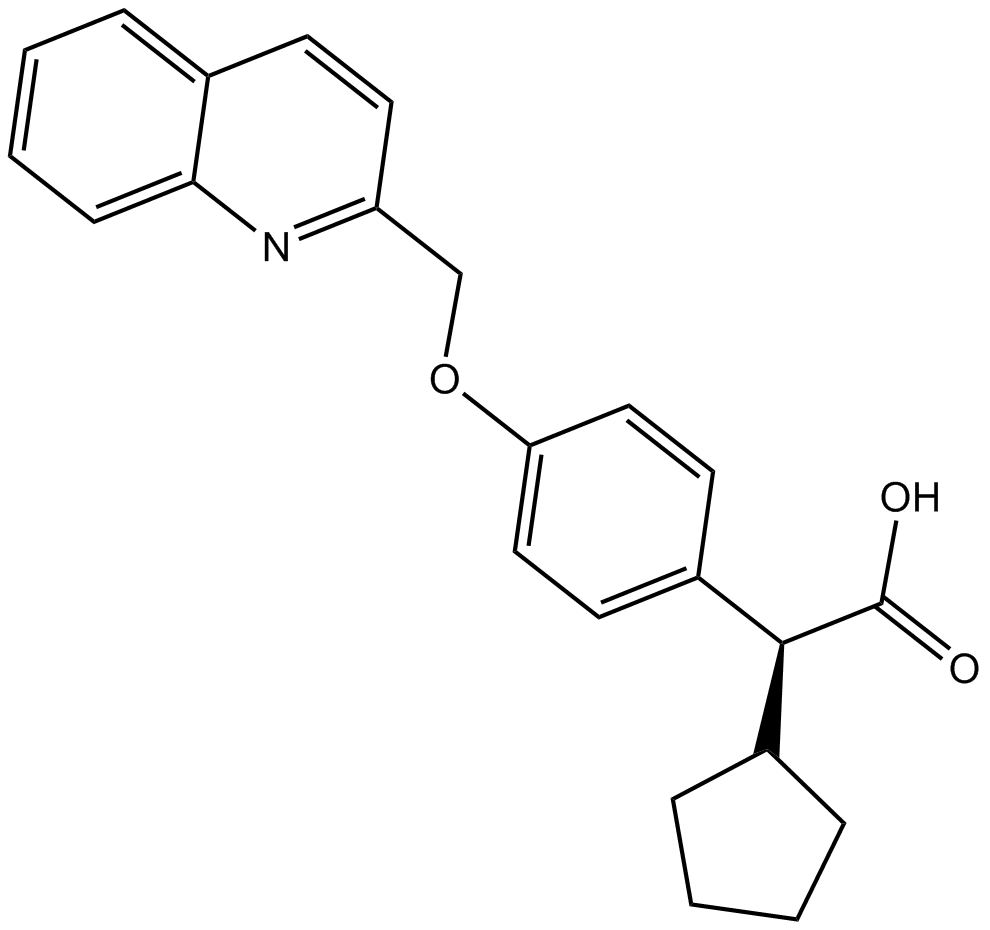
-
GC18487
BC-1215
BC-1215 ist ein Hemmer des F-Box-Proteins 3 (Fbxo3).
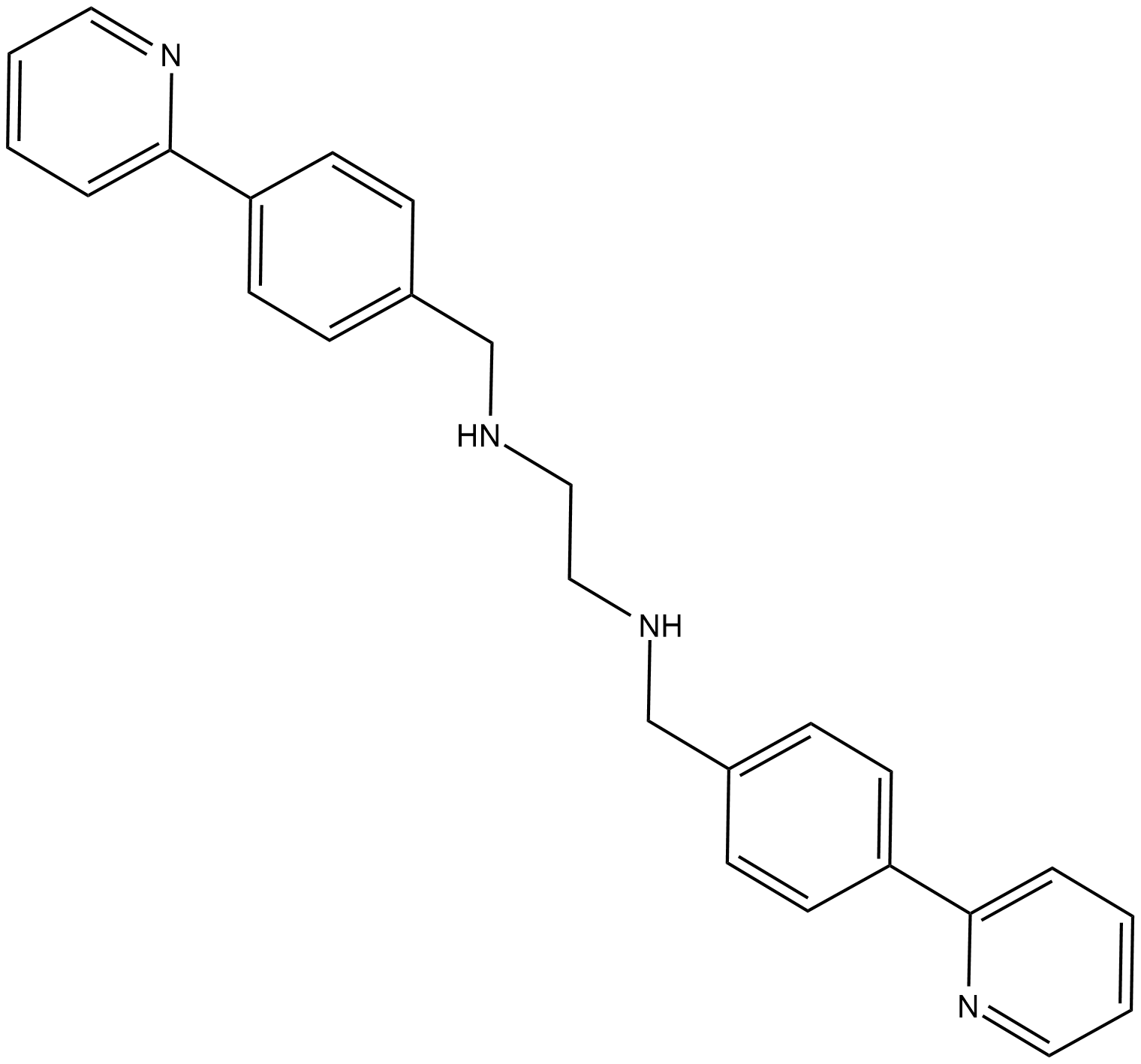
-
GC41583
BCN-E-BCN
BCN-E-BCN is a strained cycloalkyne probe for detecting proteins that have been sulfenylated, the first intermediate step in protein oxidation.

-
GC35481
BCX 1470
BCX 1470 hemmt die esterolytische AktivitÄt von Faktor D (IC50 = 96 nM) und C1s (IC50 = 1,6 nM), 3,4- bzw. 200-fach besser als die von Trypsin.
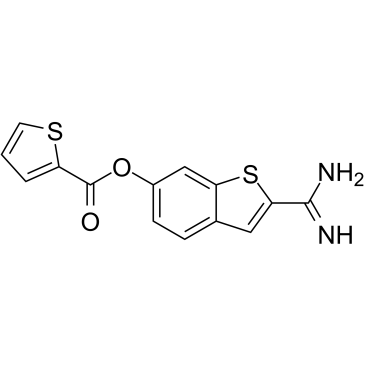
-
GC35482
BCX 1470 methanesulfonate
BCX 1470-Methansulfonat hemmt die esterolytische AktivitÄt von Faktor D (IC50 = 96 nM) und C1s (IC50 = 1,6 nM), 3,4- bzw. 200-fach besser als die von Trypsin.
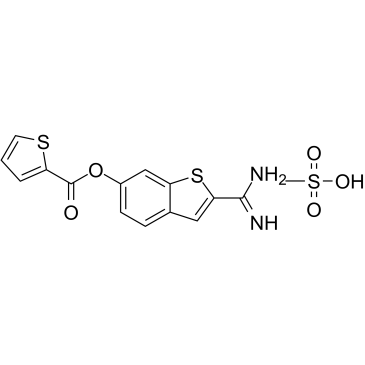
-
GC46908
BE-24566B
A fungal metabolite
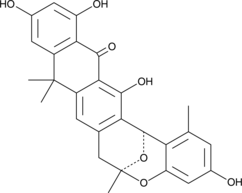
-
GC46910
Beauvericin A
A cyclodepsipeptide with diverse biological activities
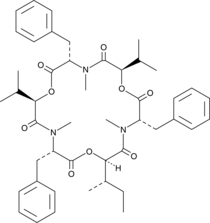
-
GC49038
Benanomicin A
A microbial metabolite with antifungal, fungicidal, and antiviral activities
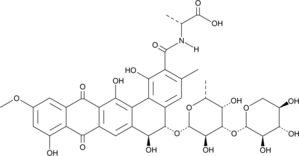
-
GC52468
Benanomicin B
A microbial metabolite with antifungal, fungicidal, and antiviral activities
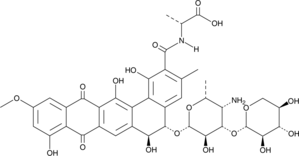
-
GC49040
Benanomicin B (formate)
A microbial metabolite with antifungal, fungicidal, and antiviral activities
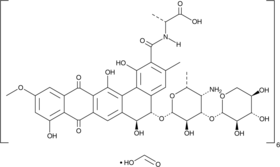
-
GC49042
Benastatin A
A bacterial metabolite with diverse biological activities
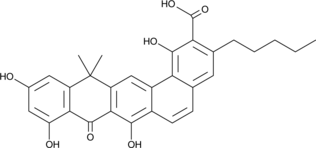
-
GC49043
Benastatin B
A bacterial metabolite with diverse biological activities
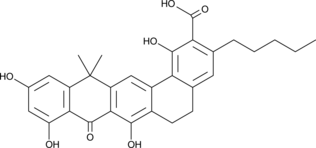
-
GC49044
Benastatin C
A bacterial metabolite with diverse biological activities
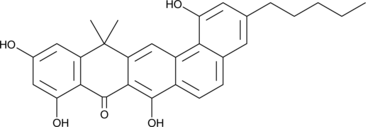
-
GC64354
Bendamustine
Bendamustin (freie Base von SDX-105), ein Purin-Analogon, ist ein DNA-Vernetzungsmittel. Bendamustin aktiviert die Stressreaktion auf DNA-SchÄdigung und Apoptose. Bendamustin hat starke alkylierende, Antikrebs- und Antimetabolit-Eigenschaften.
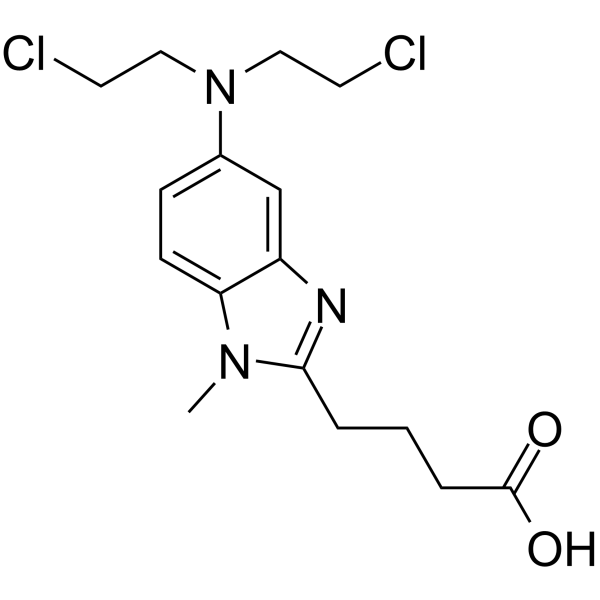
-
GC34046
Bendazol
Bendazol ist ein blutdrucksenkendes Medikament, das auch die NO-Synthase-AktivitÄt in Nierenglomeruli und Sammelrohren verstÄrken kann.
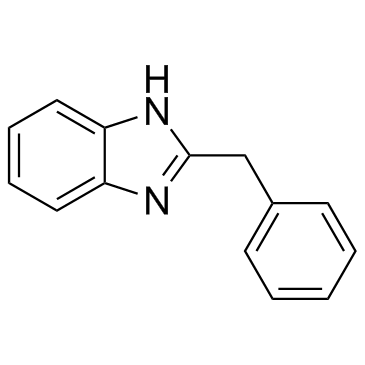
-
GC15949
Benfotiamine
A lipid-soluble form of vitamin B1
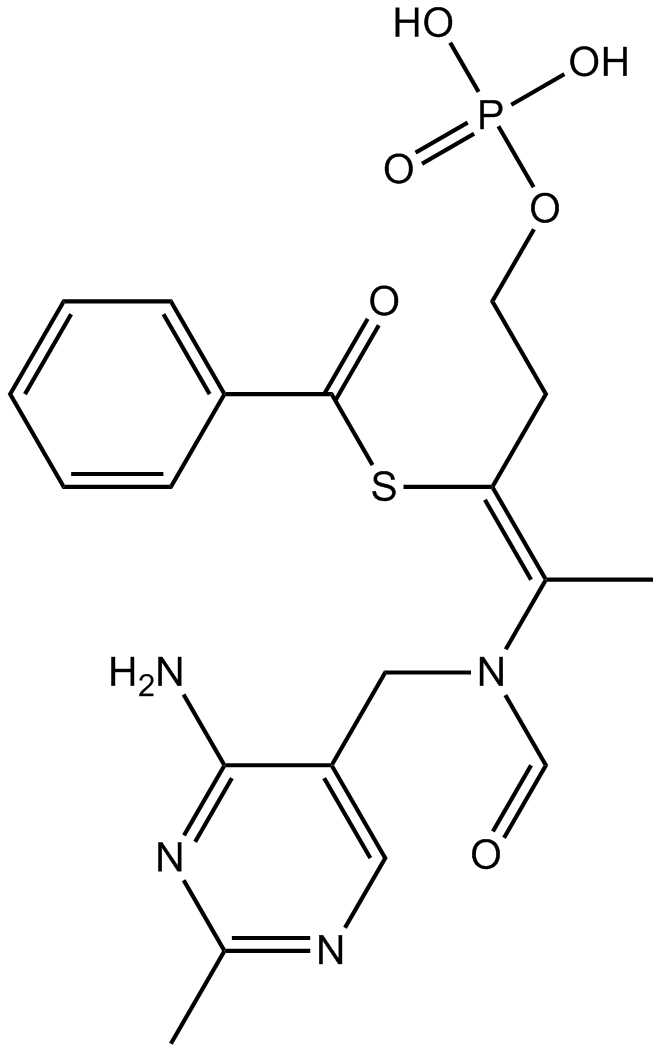
-
GC49836
Benoxaprofen
Benoxaprofen (LRCL 3794) ist eine starke und lang wirkende entzÜndungshemmende und fiebersenkende Verbindung.

-
GC39346
Benralizumab
Benralizumab (MEDI-563) ist ein auf den Interleukin-5-Rezeptor α (IL-5Rα) gerichteter zytolytischer monoklonaler AntikÖrper, der Über eine verstÄrkte antikÖrperabhÄngige zellvermittelte ZytotoxizitÄt eine direkte, schnelle und nahezu vollstÄndige Depletion von Eosinophilen induziert.

-
GC35494
Benzoyloxypaeoniflorin
Benzoyloxypaeoniflorin, isoliert aus der Wurzel von Paeonia suffruticosa, ist ein Tyrosinase-Inhibitor gegen Pilztyrosinase mit einem IC50 von 0,453 mM.
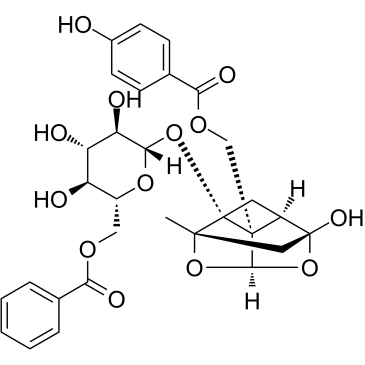
-
GC15058
Benzydamine HCl
Benzydamin-HCl ist ein lokal wirkendes nichtsteroidales entzÜndungshemmendes Medikament mit lokalanÄsthetischen und analgetischen Eigenschaften; bindet selektiv an Prostaglandinsynthetase und hat eine bemerkenswerte antibakterielle AktivitÄt in vitro.
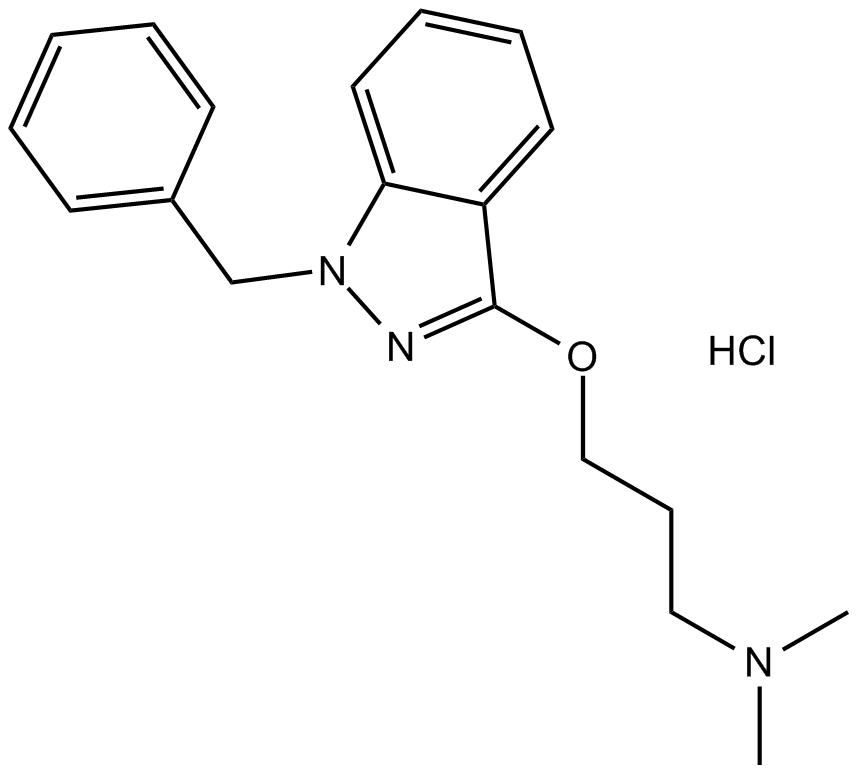
-
GC60636
Benzyl butyl phthalate
Benzylbutylphthalat, ein Mitglied der PhthalsÄureester (PAEs), kann die Migration und Invasion von HÄmangiomzellen (HA) durch Hochregulierung von Zeb1 auslÖsen. Benzylbutylphthalat aktiviert den Arylkohlenwasserstoffrezeptor (AhR) in Brustkrebszellen, um die SPHK1/S1P/S1PR3-SignalÜbertragung zu stimulieren, und verstÄrkt die Bildung von Metastasen-initiierenden Brustkrebsstammzellen (BCSCs).

-
GN10443
Berbamine
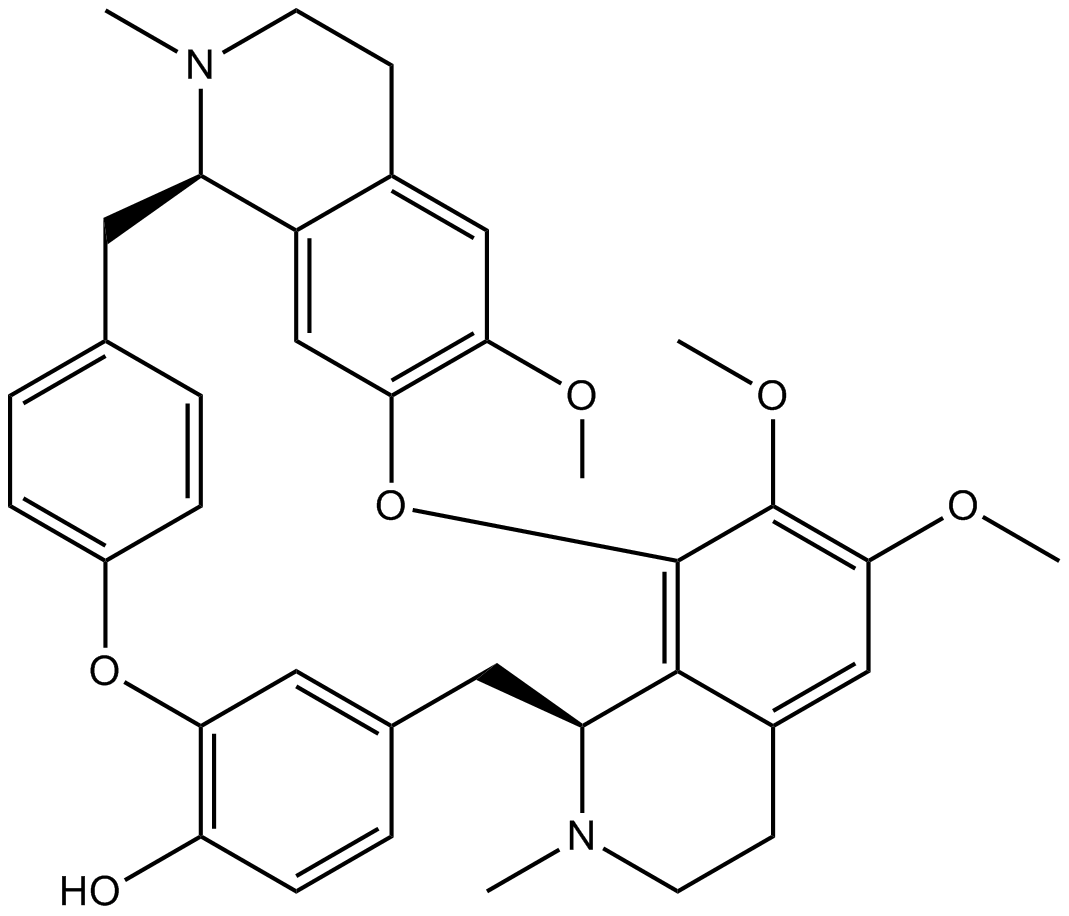
-
GN10358
Berbamine hydrochloride
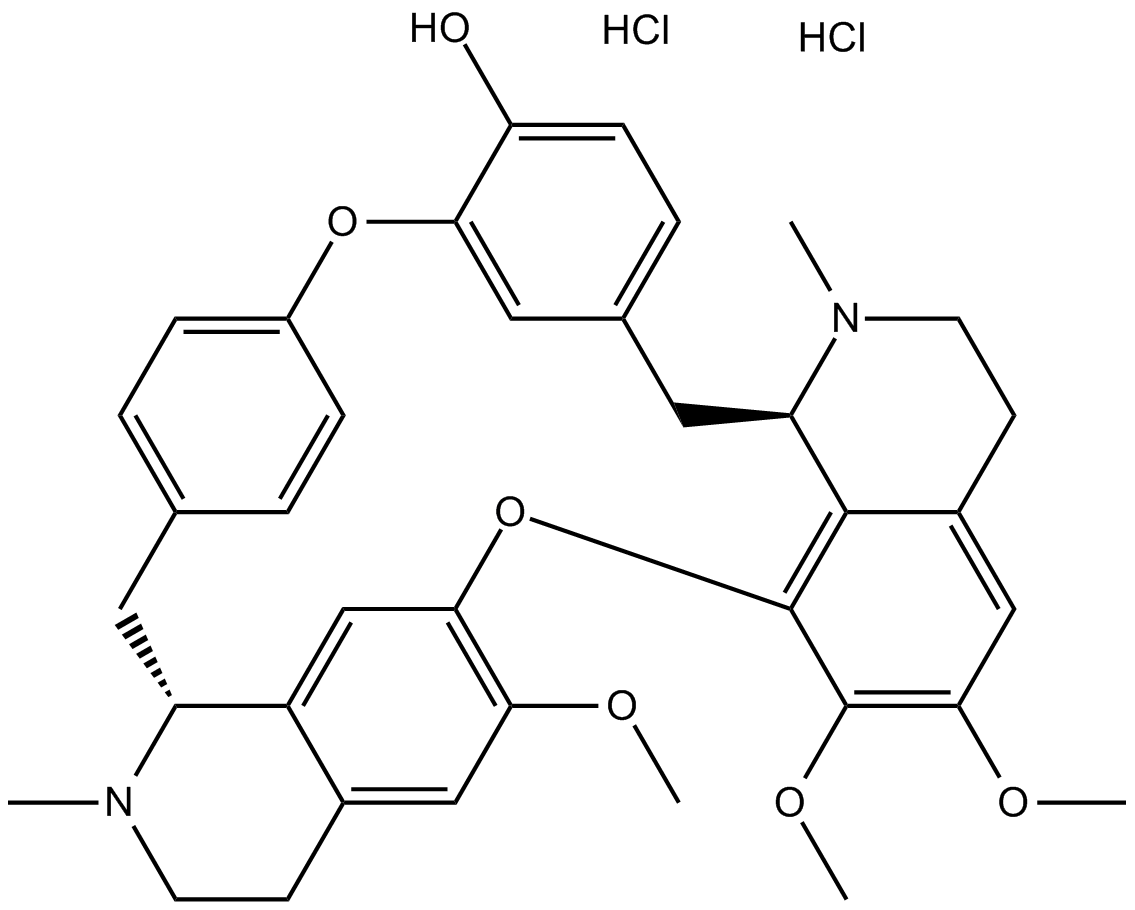
-
GN10221
Berberine
Berberin (Natürliches Gelb 18) ist ein Alkaloid, das aus der chinesischen Kräutermedizin Huanglian als Antibiotikum isoliert wird. Berberin (Natürliches Gelb 18) induziert die Bildung von reaktiven Sauerstoffverbindungen (ROS) und hemmt die DNA-Topoisomerase.
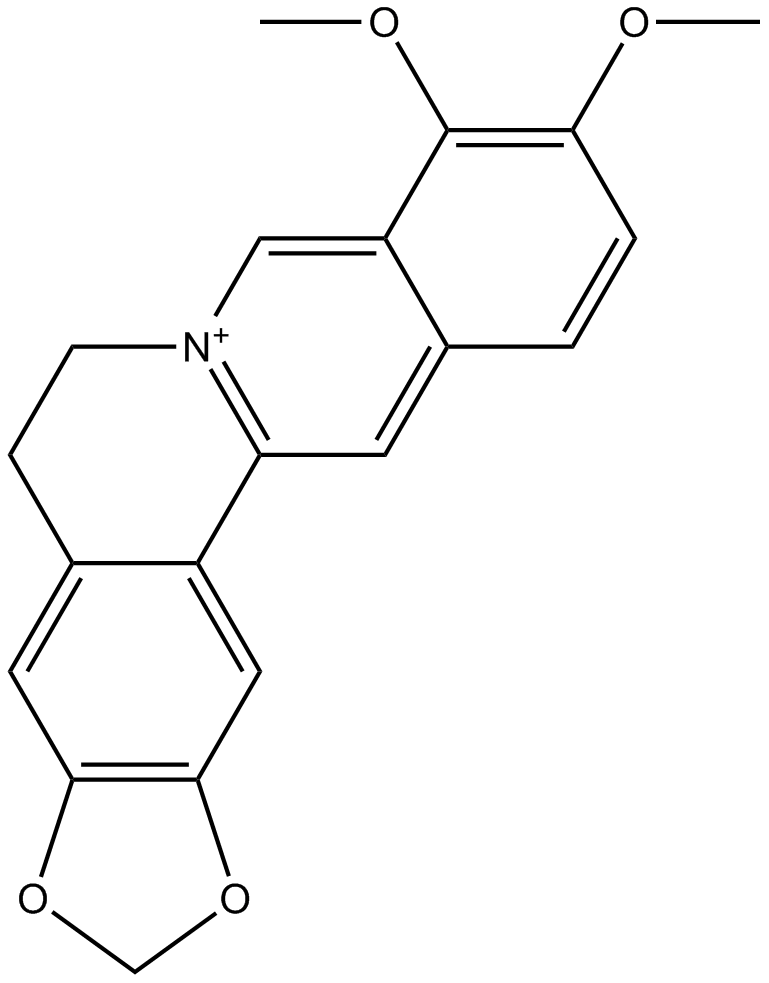
-
GC35497
Berberine chloride hydrate
Berberinchloridhydrat (Natural Yellow 18 Chloridhydrat) ist ein Alkaloid, das als Antibiotikum wirkt. Berberinchloridhydrat induziert die Bildung reaktiver Sauerstoffspezies (ROS) und hemmt die DNA-Topoisomerase. Antineoplastische Eigenschaften.
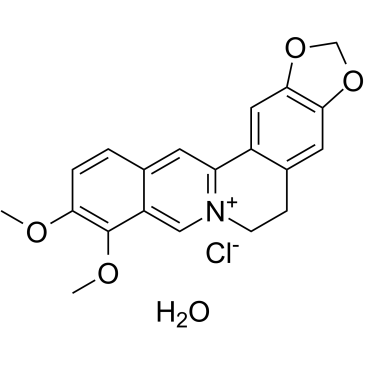
-
GN10208
Berberine hydrochloride
Berberine hydrochloride is an isoquinoline alkaloid derived from the Ranunculaceae medicinal plant Coptis chinensis. It has various pharmacological activities such as anti-tumor, anti-inflammatory, and hypoglycemic activities.
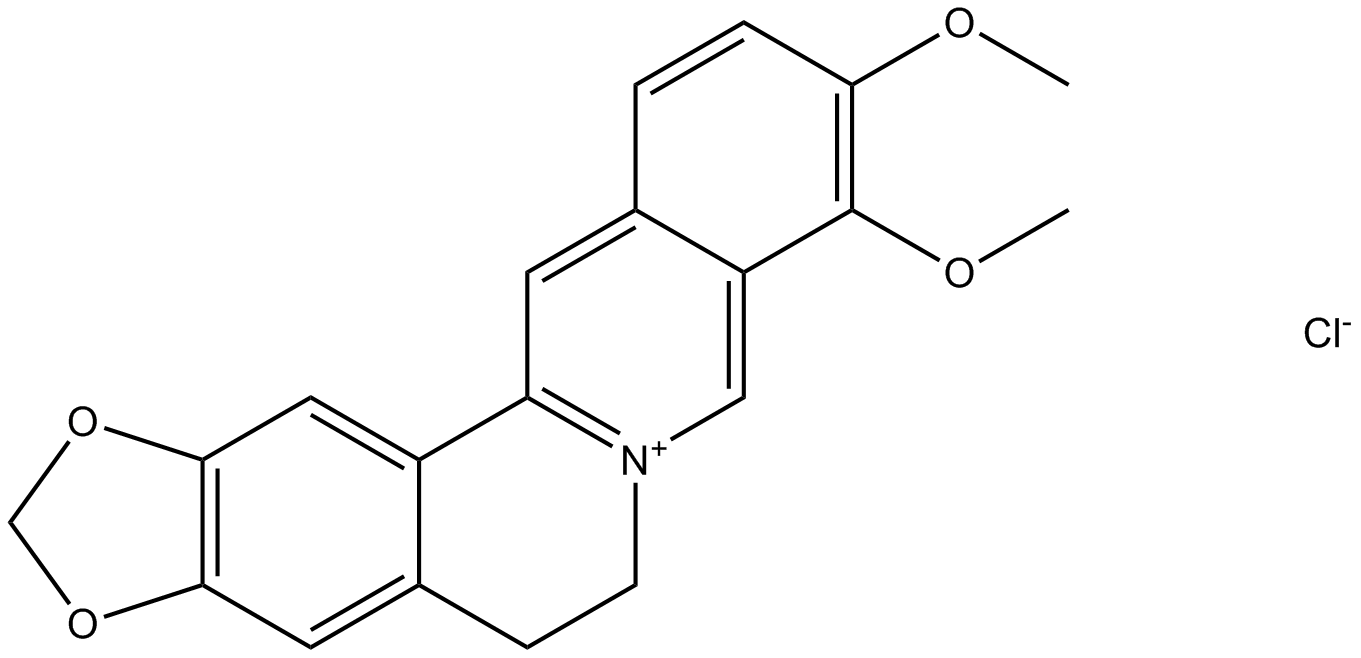
-
GN10523
Berberine Sulfate
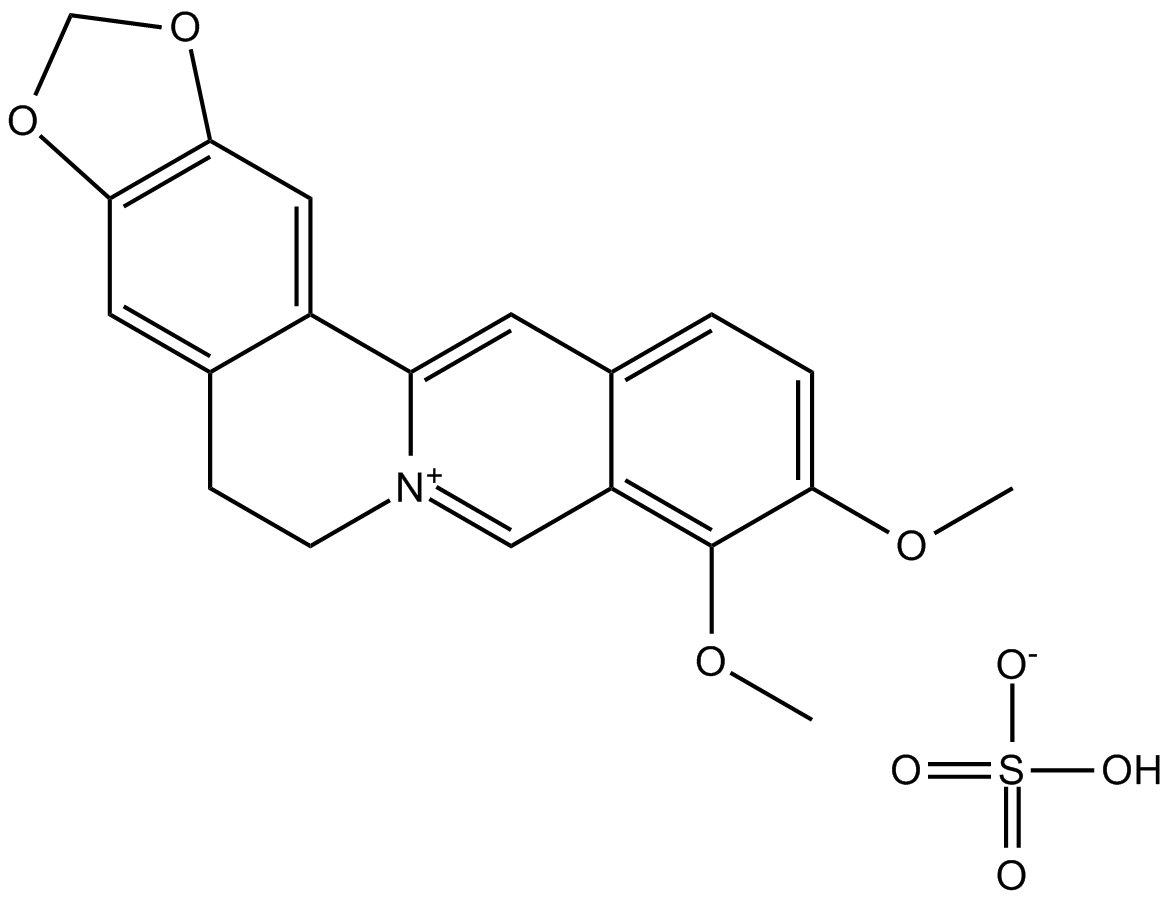
-
GC49387
Berberine-d6 (chloride)
An internal standard for the quantification of berberine
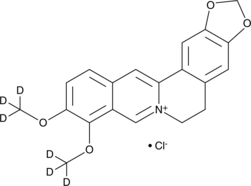
-
GC46098
Berkeleylactone E
A macrolide antibiotic
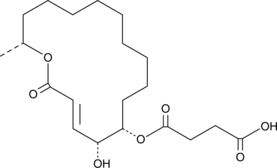
-
GC42925
Berteroin
Berteroin, ein natÜrlich vorkommendes Sulforaphan-Analogon, ist ein antimetastatisches Mittel.

-
GC46922
Betamethasone 21-phosphate (sodium salt hydrate)
A synthetic glucocorticoid
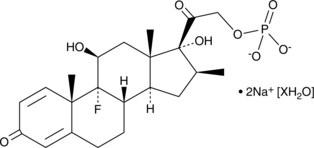
-
GC52329
Betamethasone-d5
An internal standard for the quantification of betamethasone
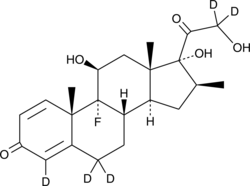
-
GC10480
Betulinic acid
A plant triterpenoid similar to bile acids
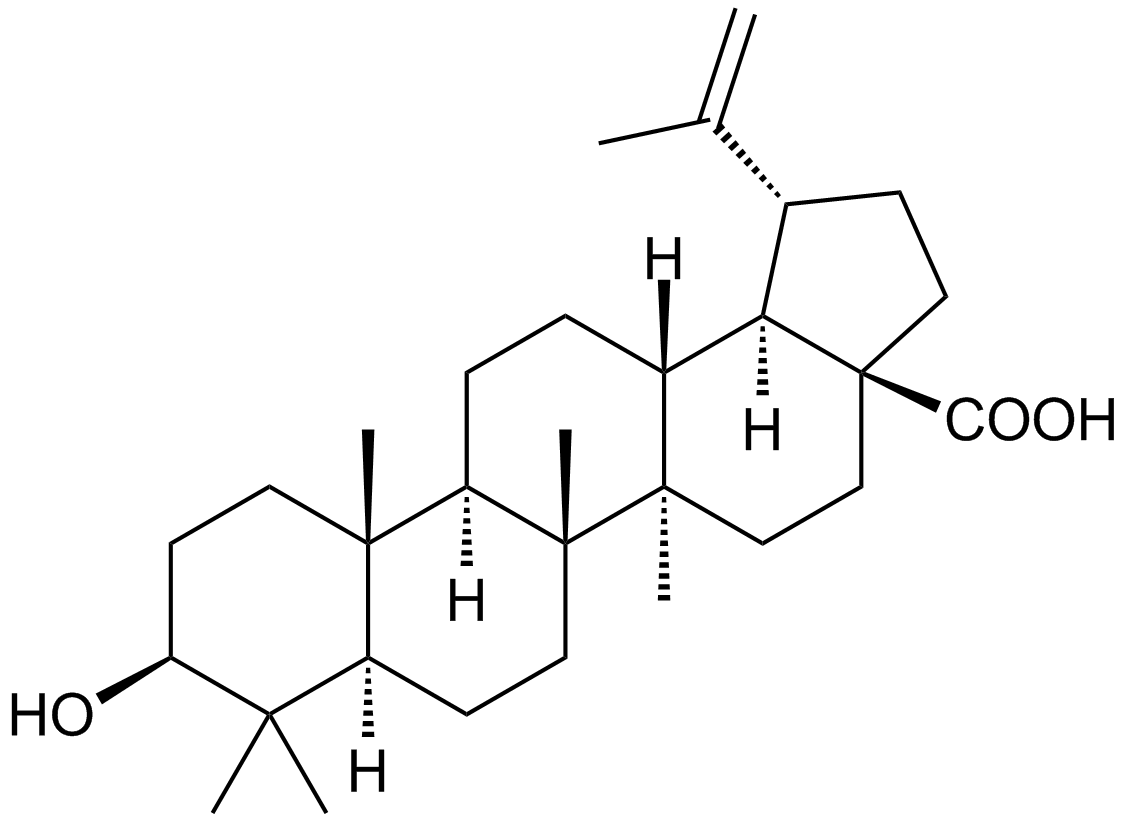
-
GC48504
Betulinic Aldehyde oxime
A derivative of betulin
